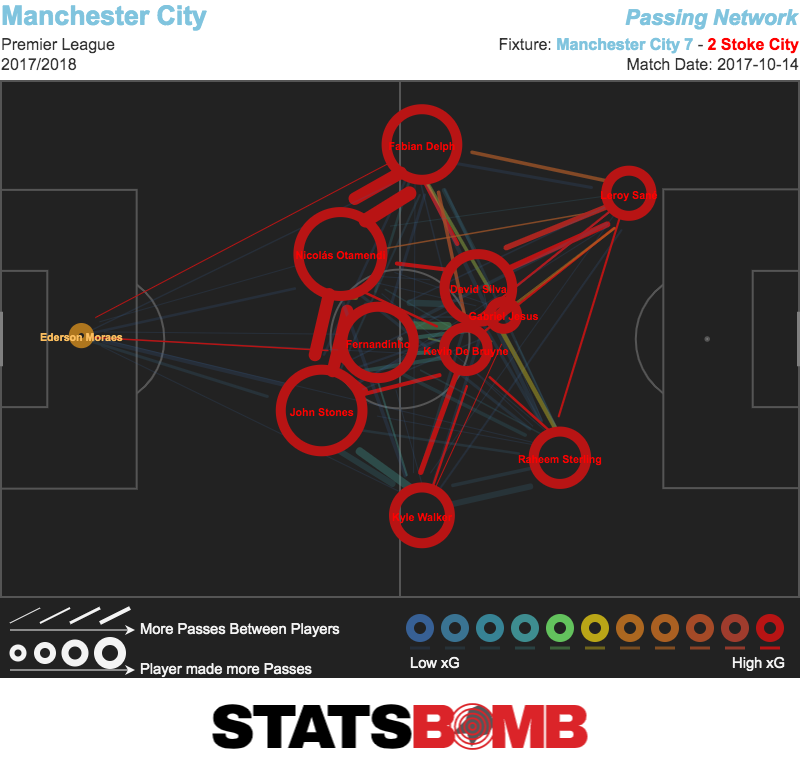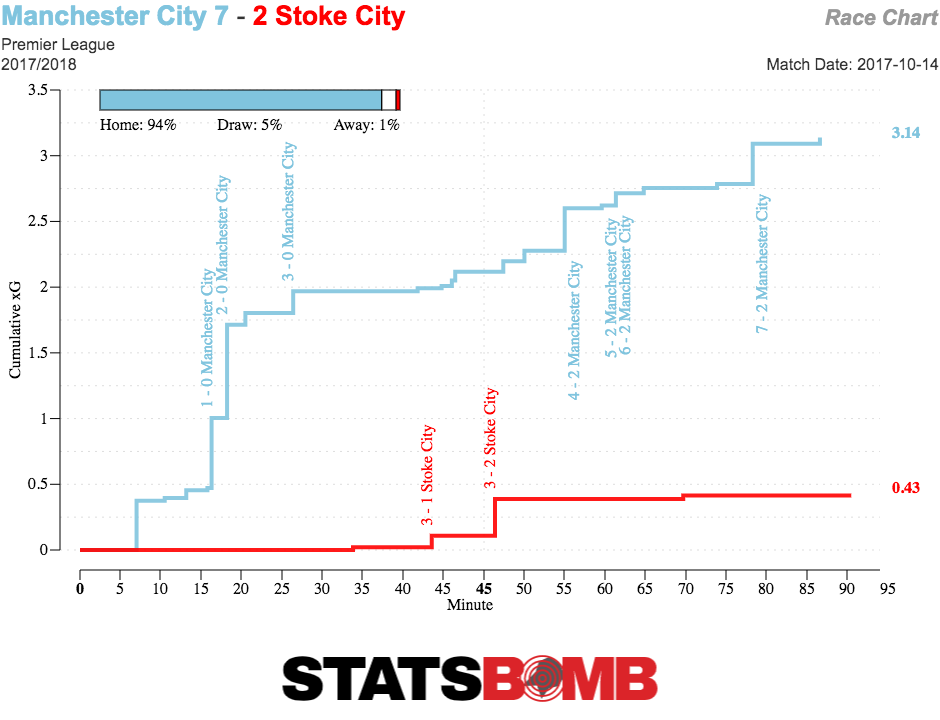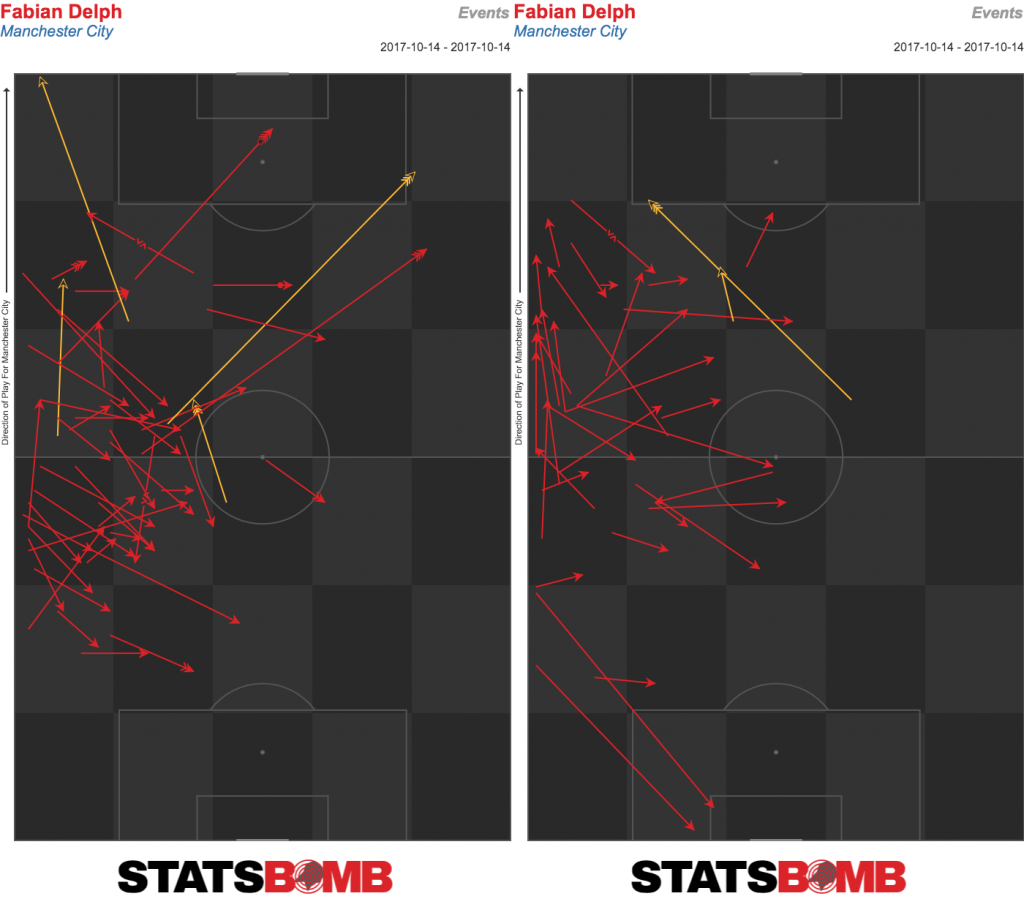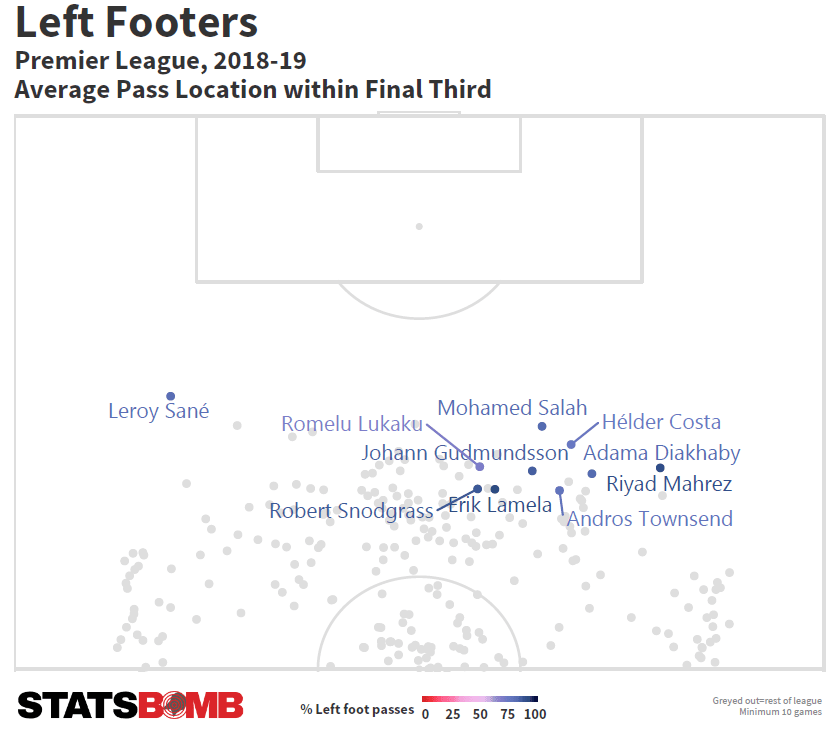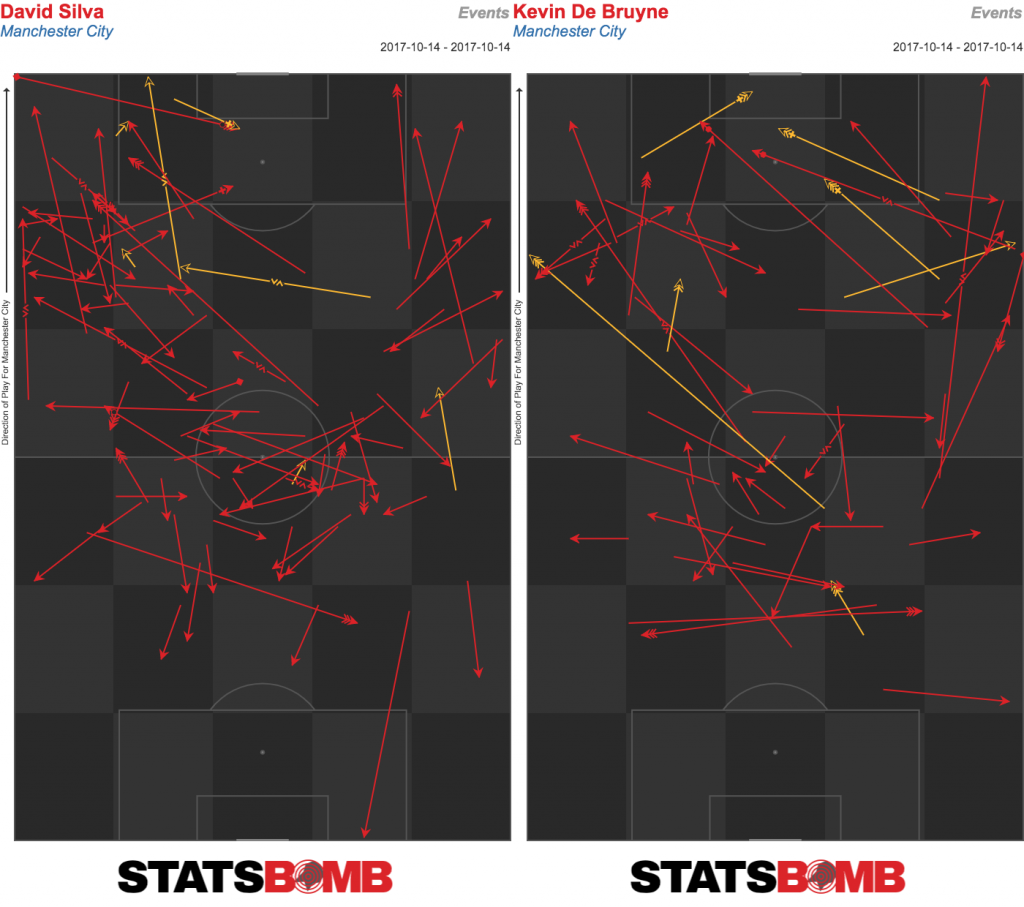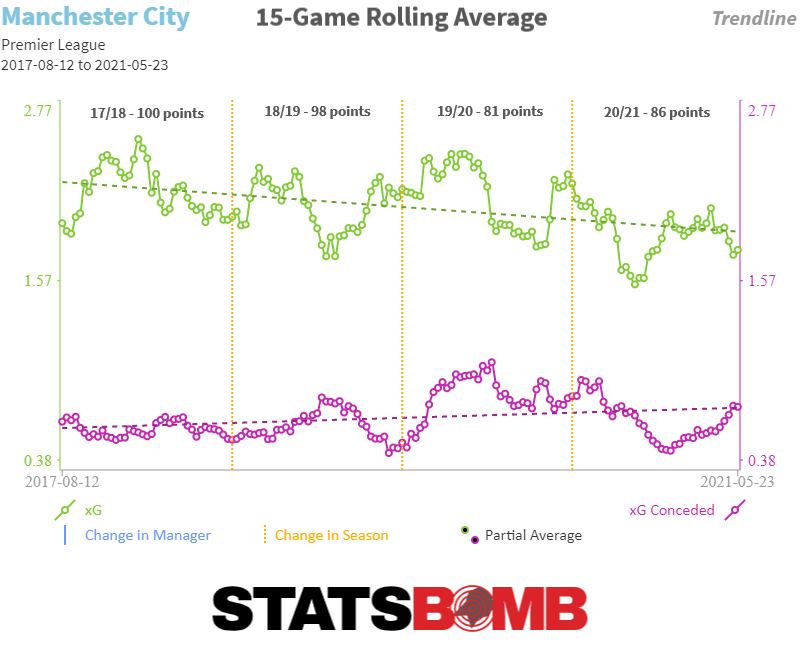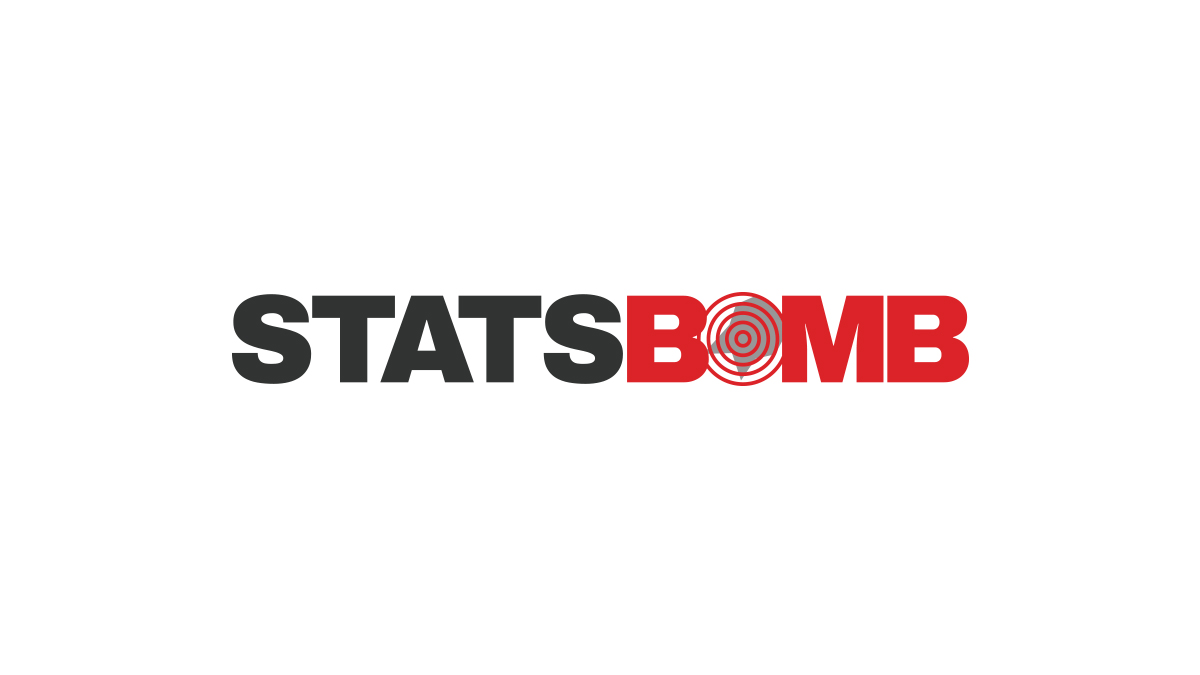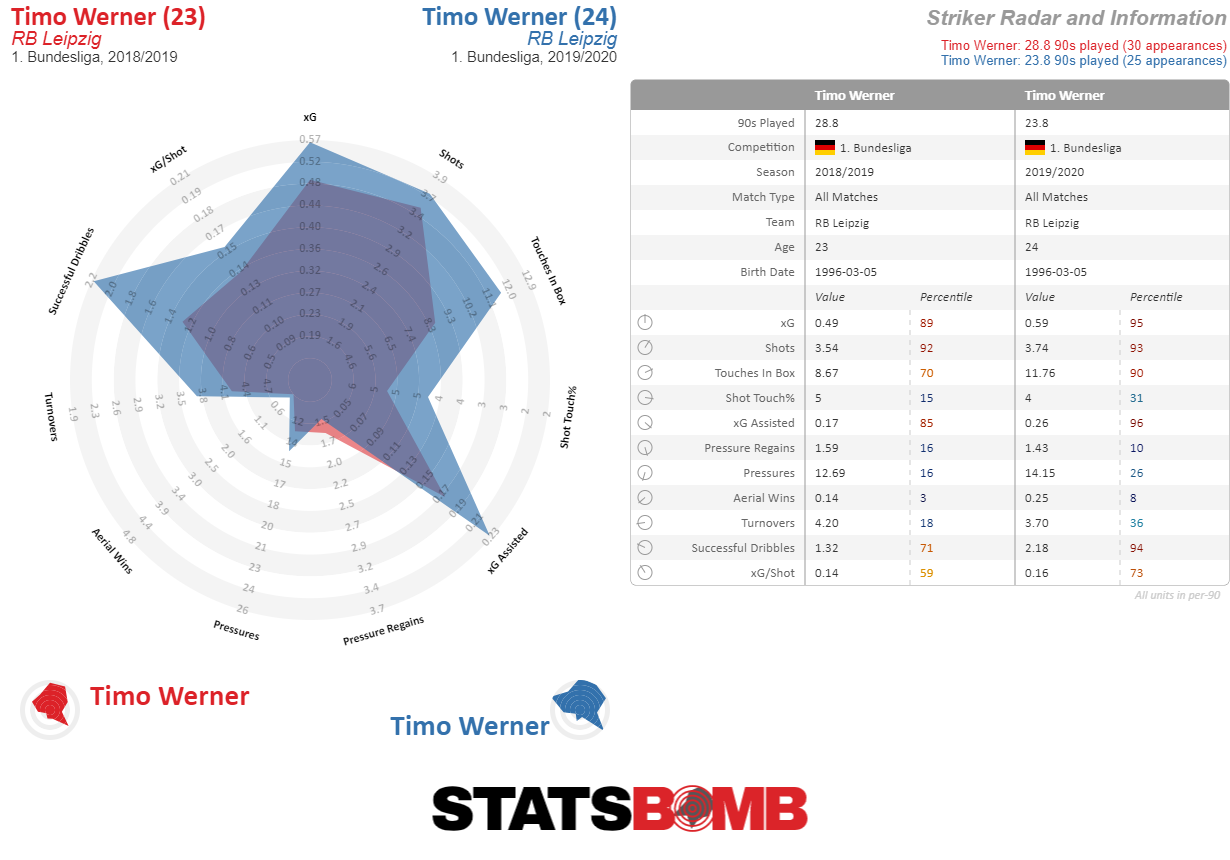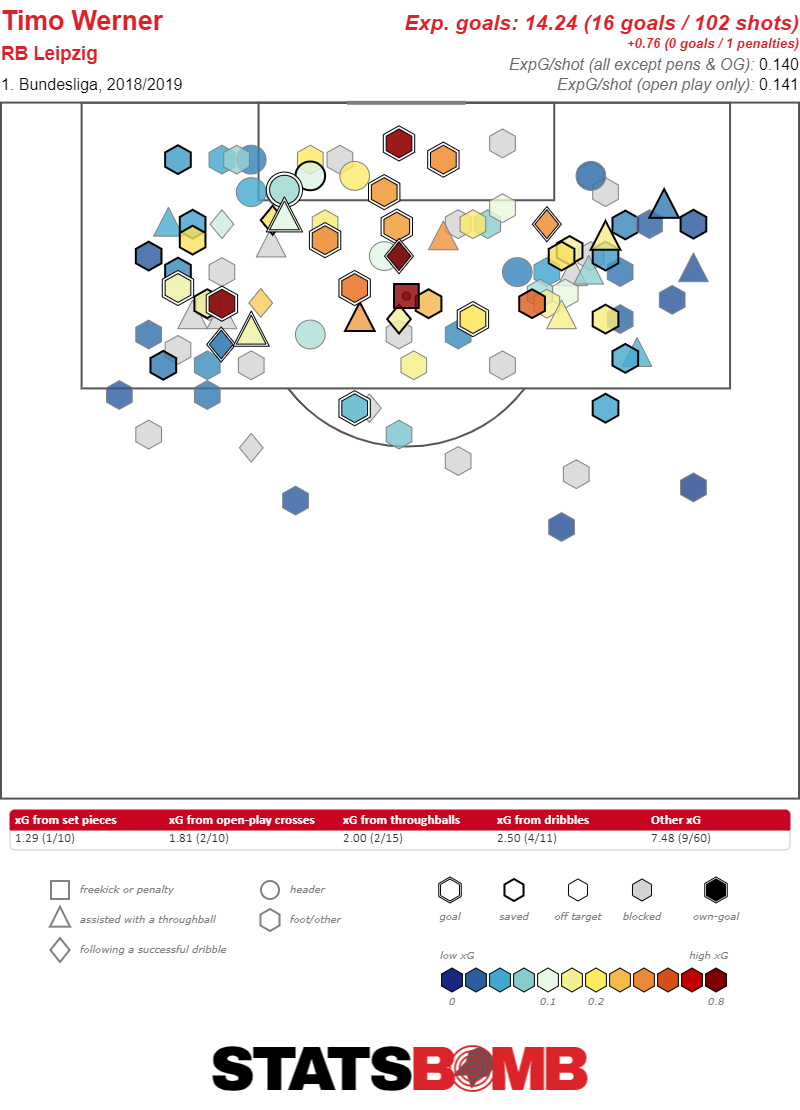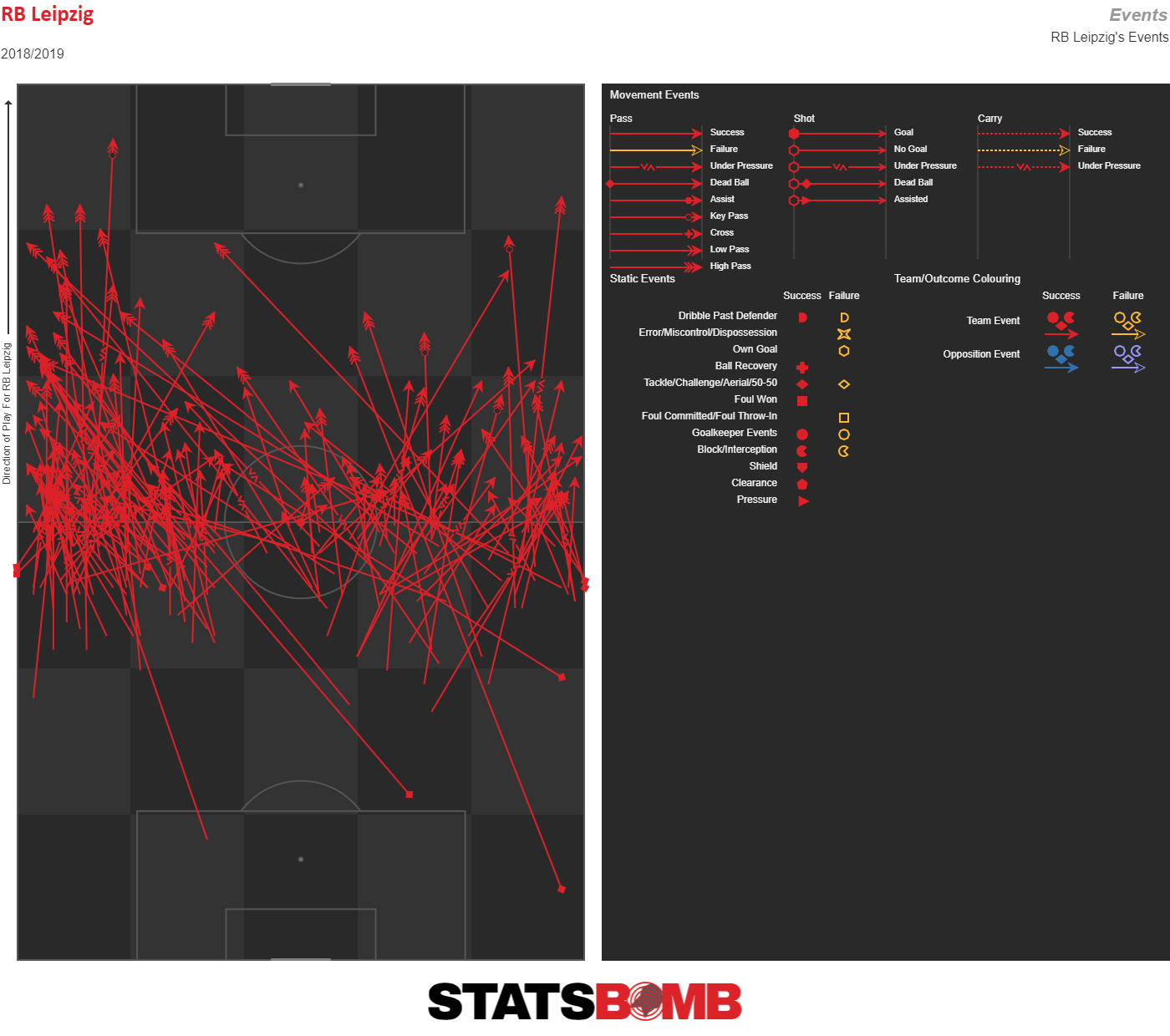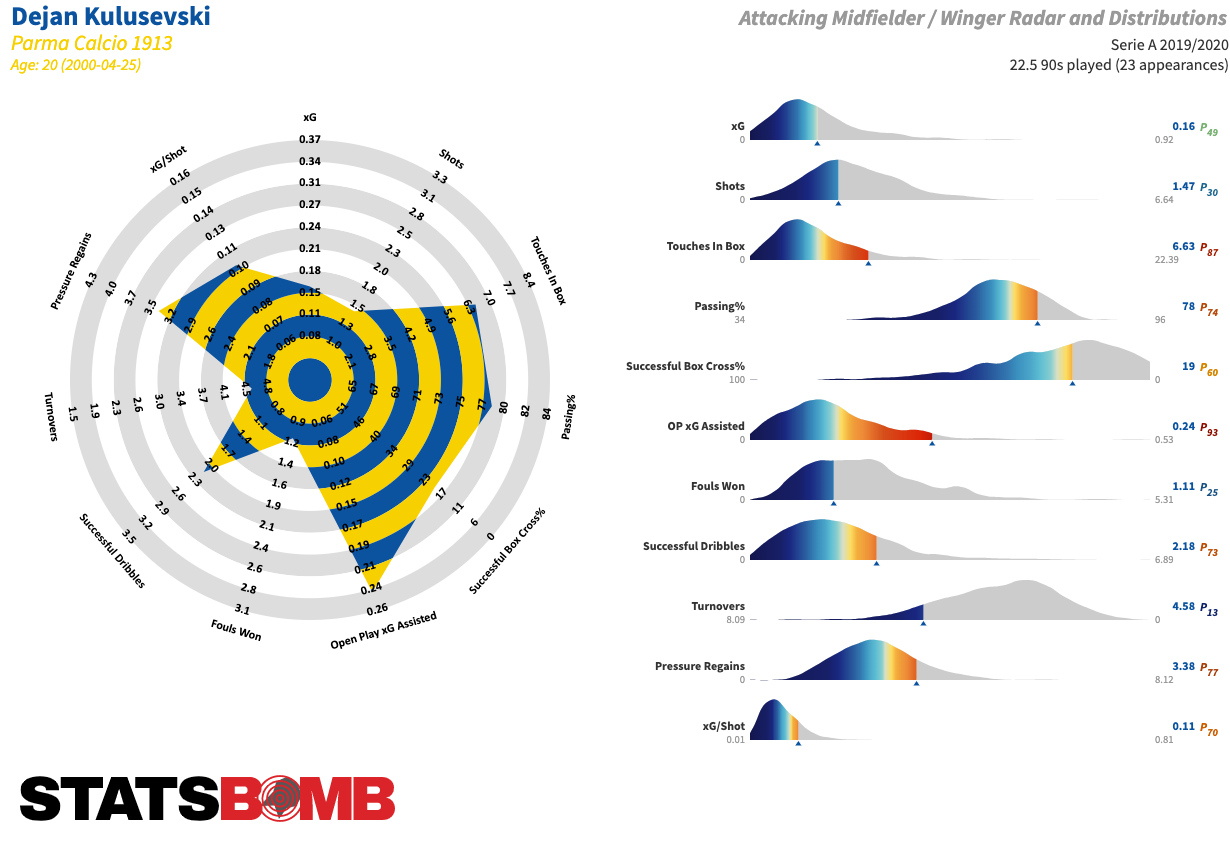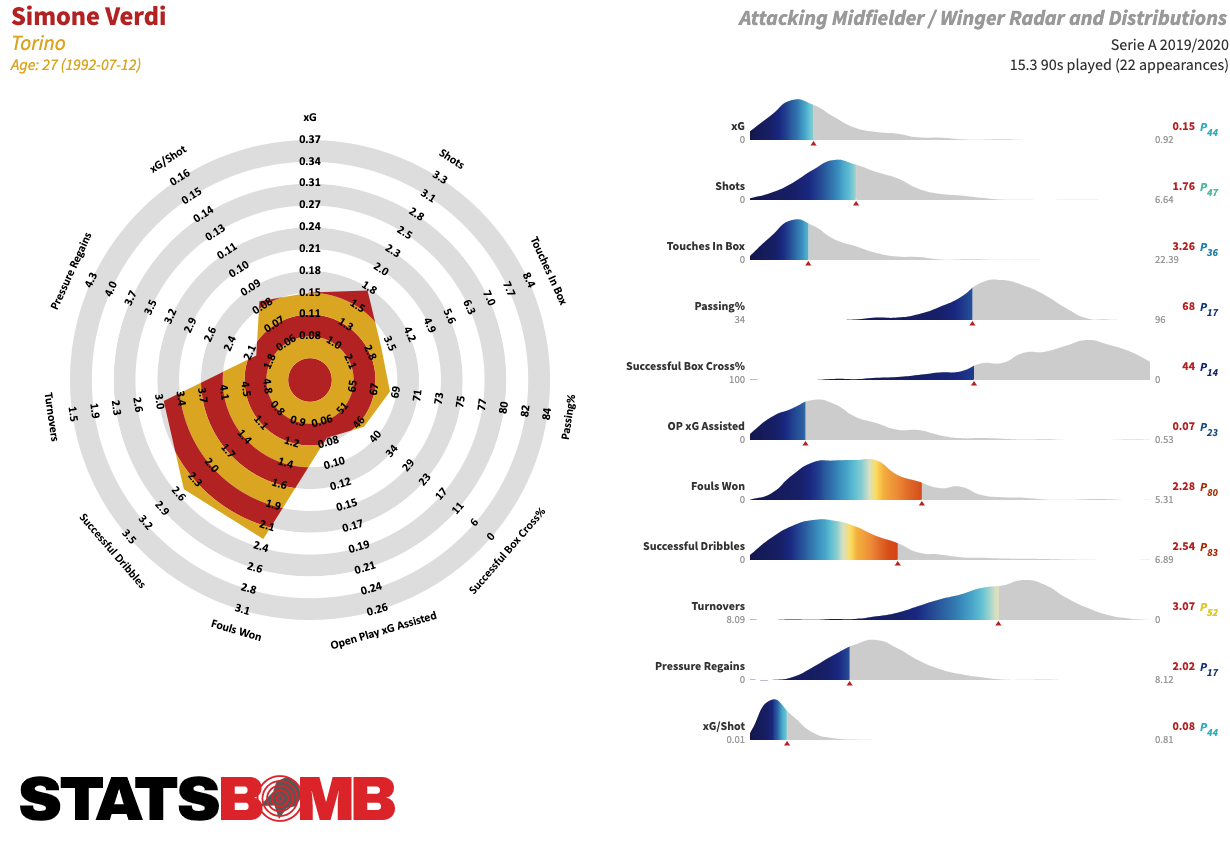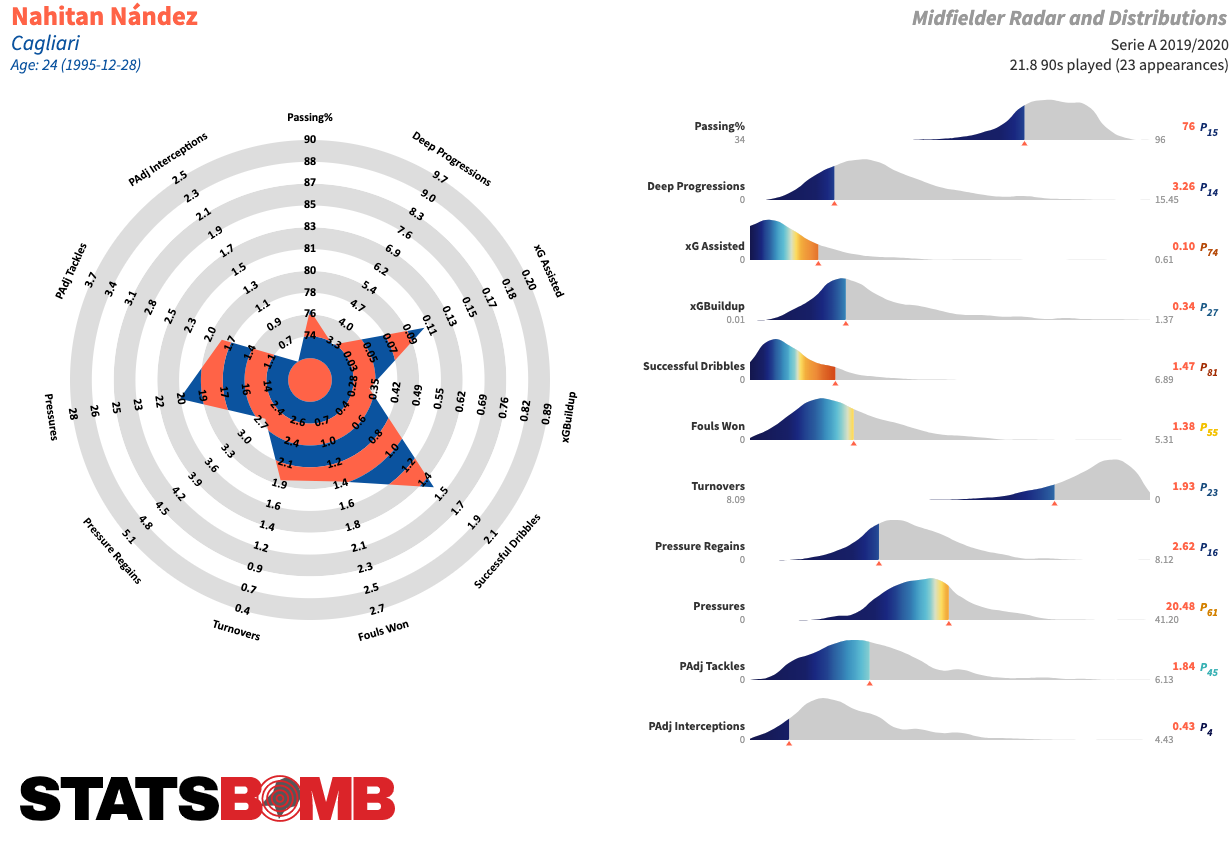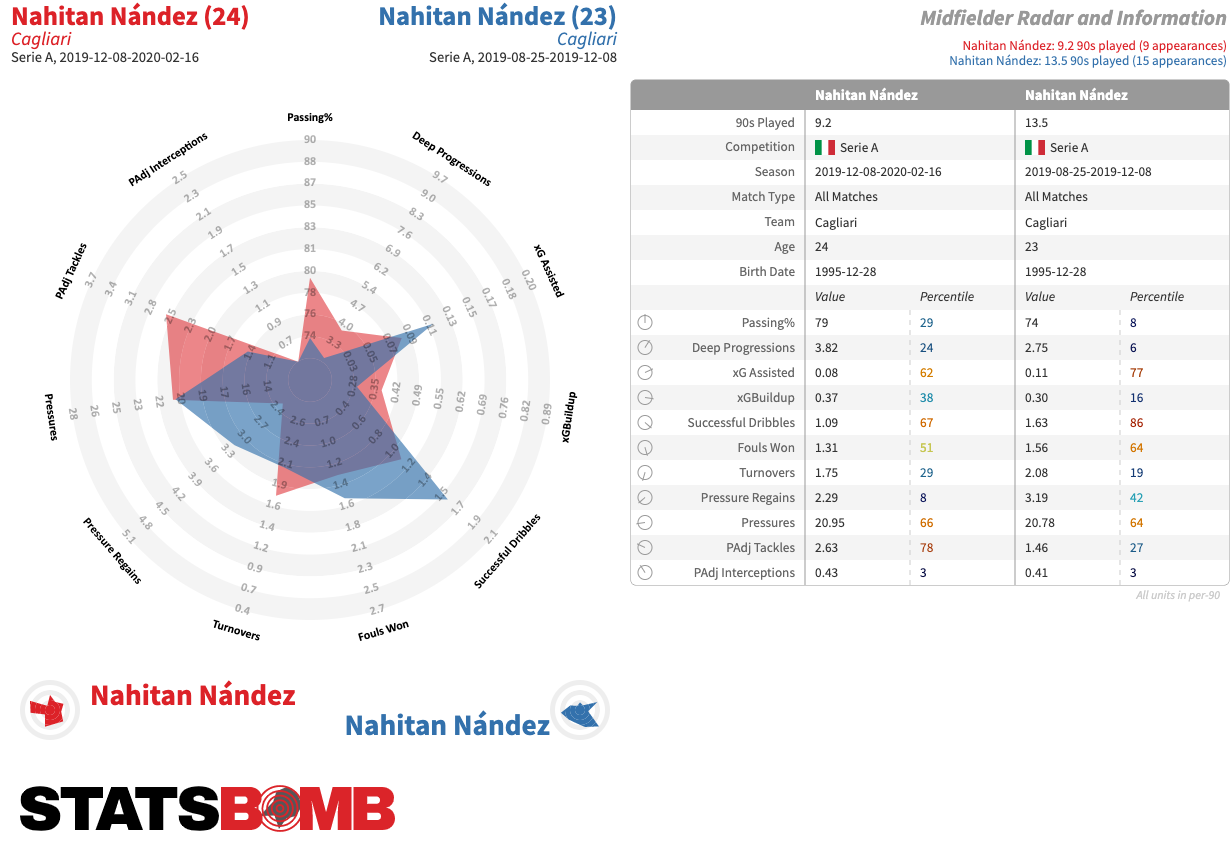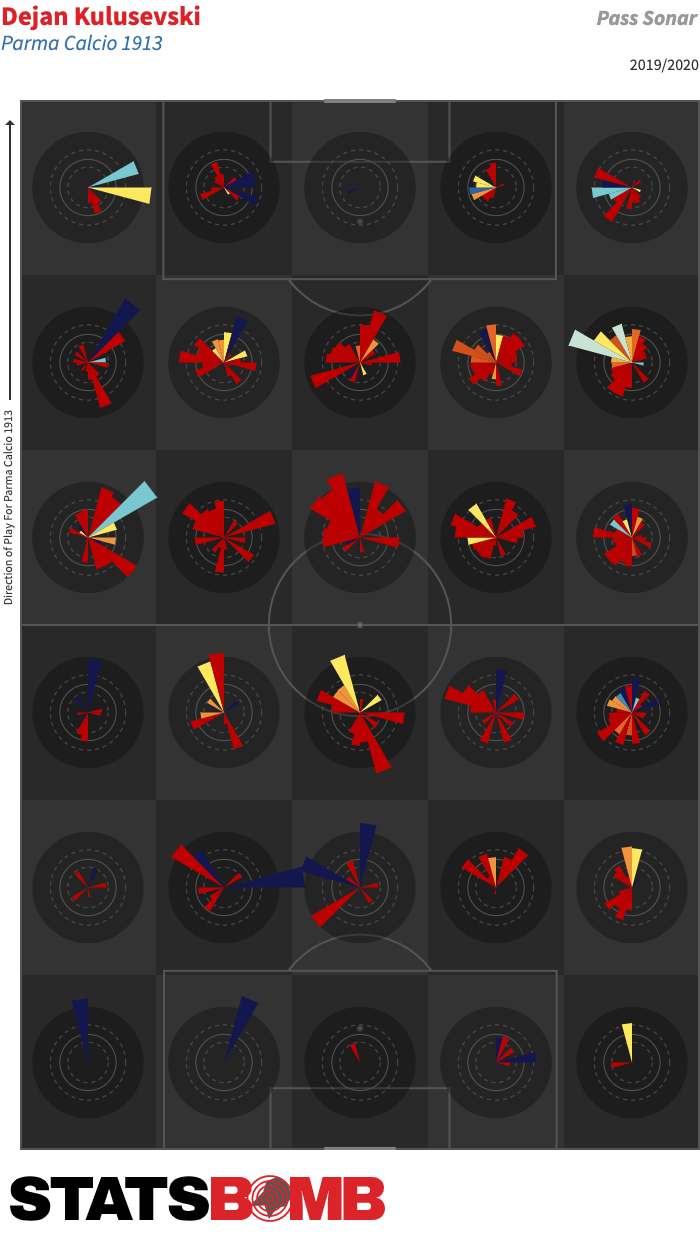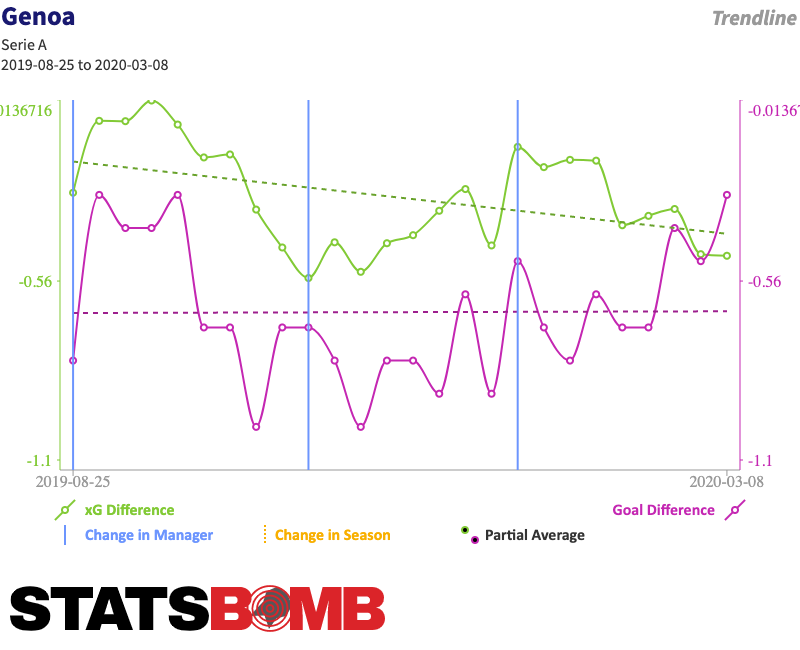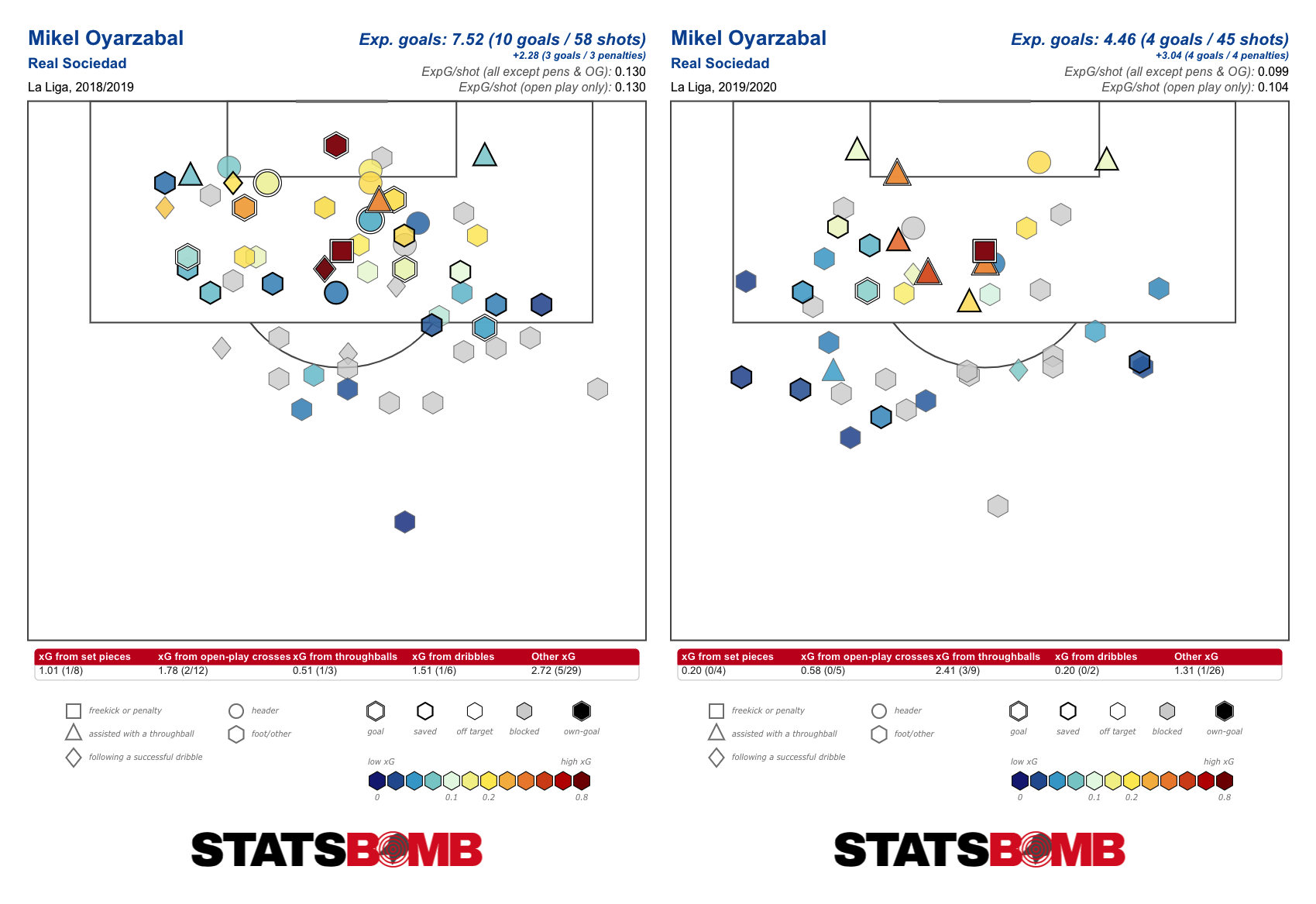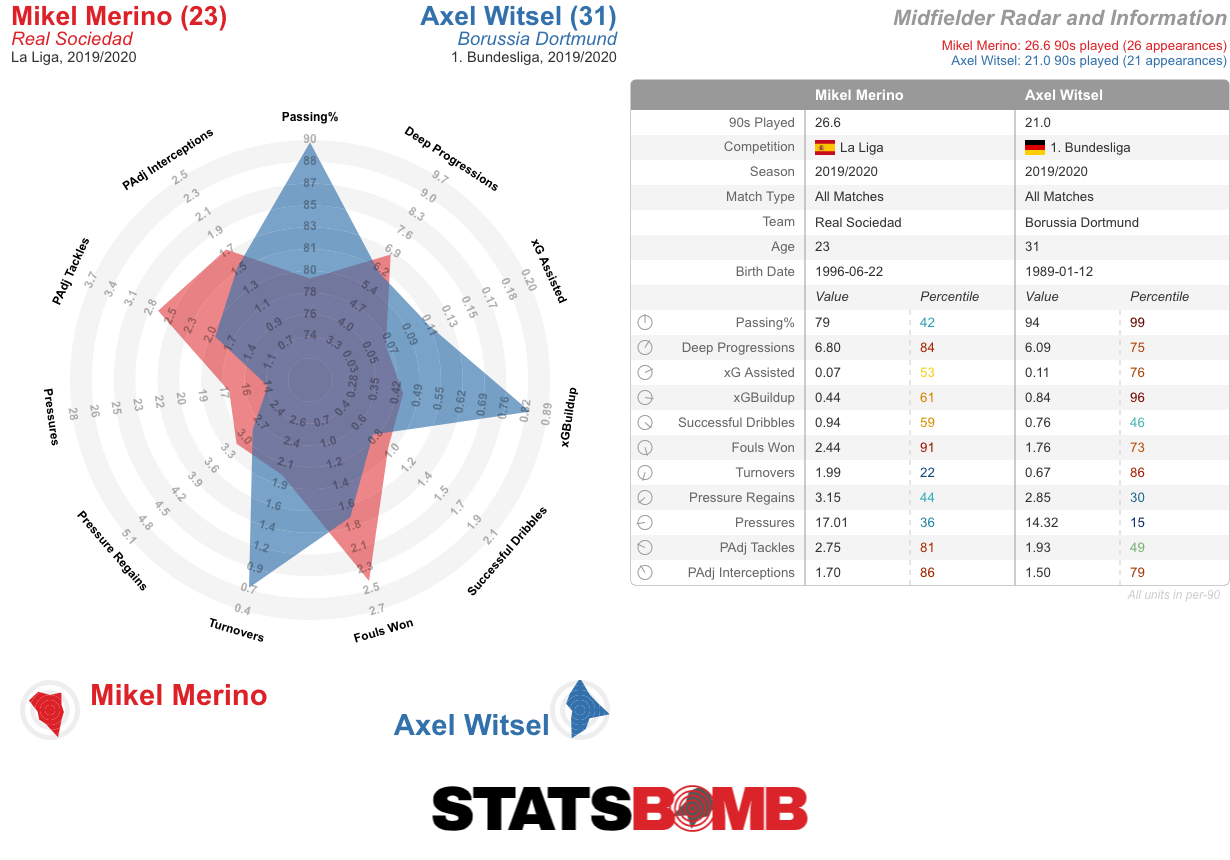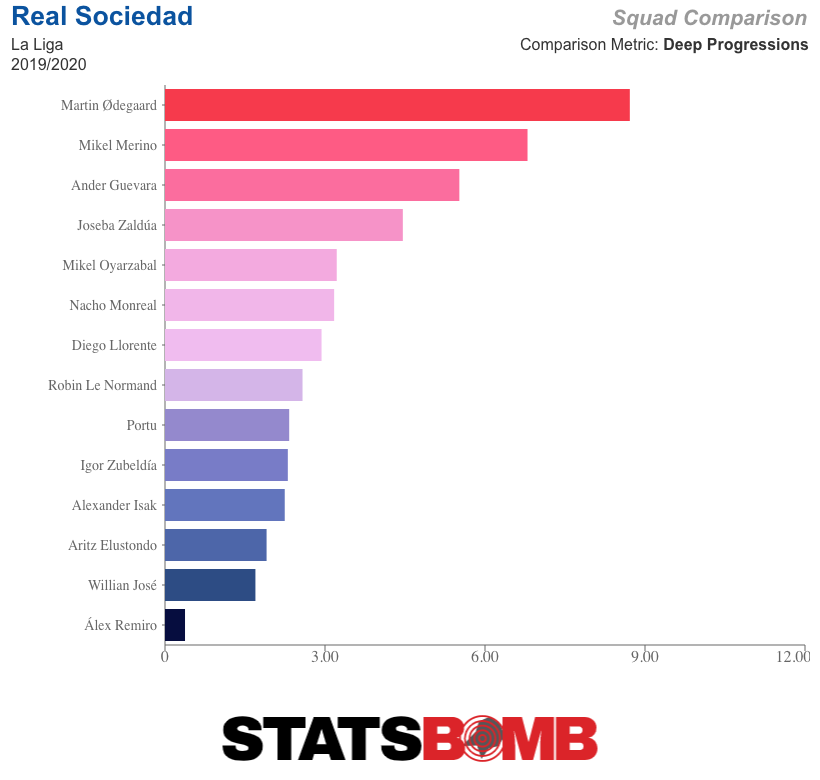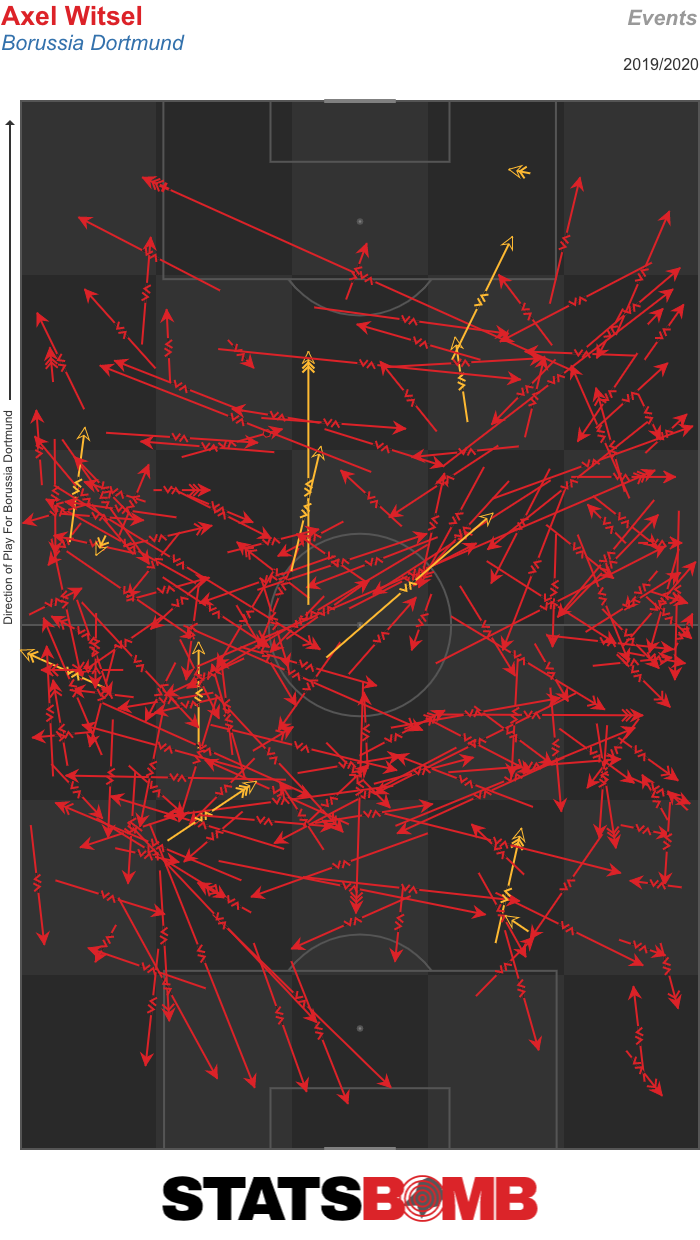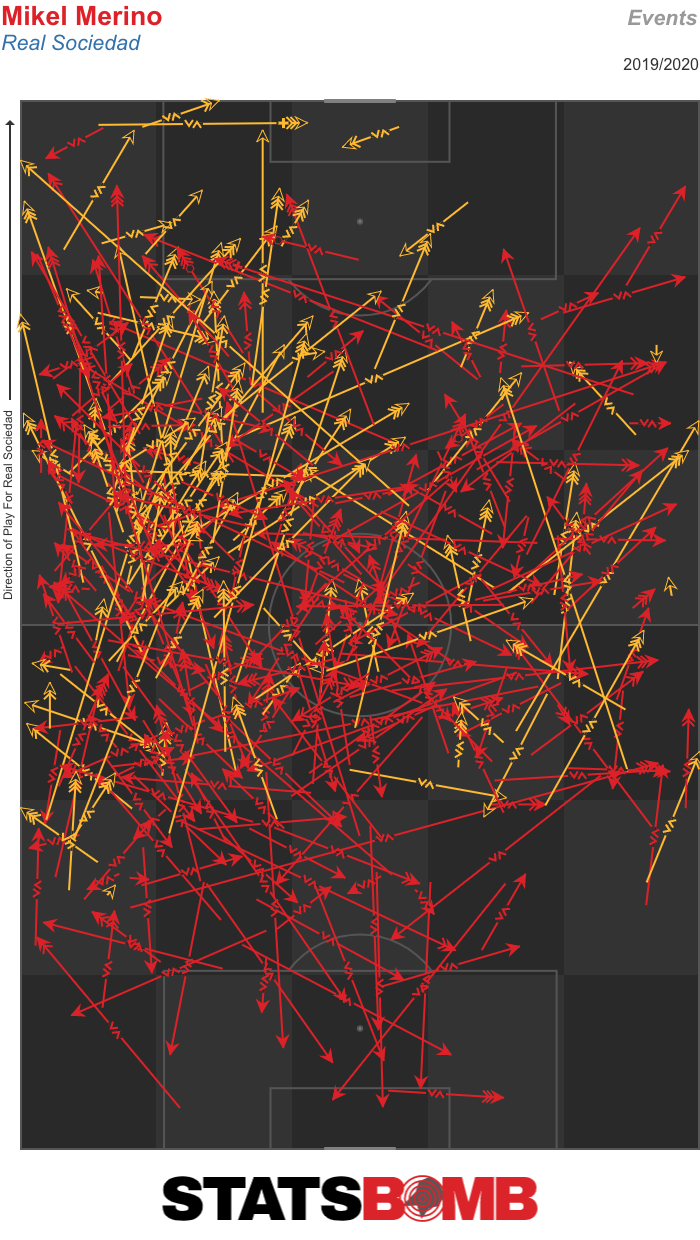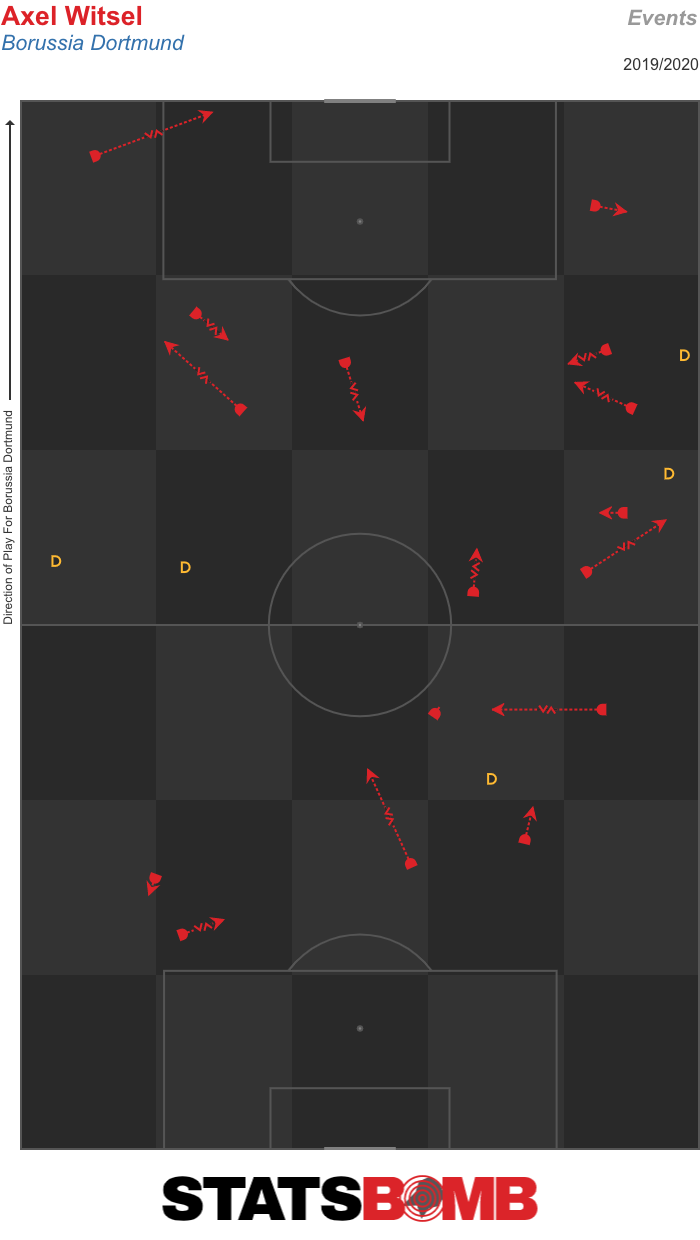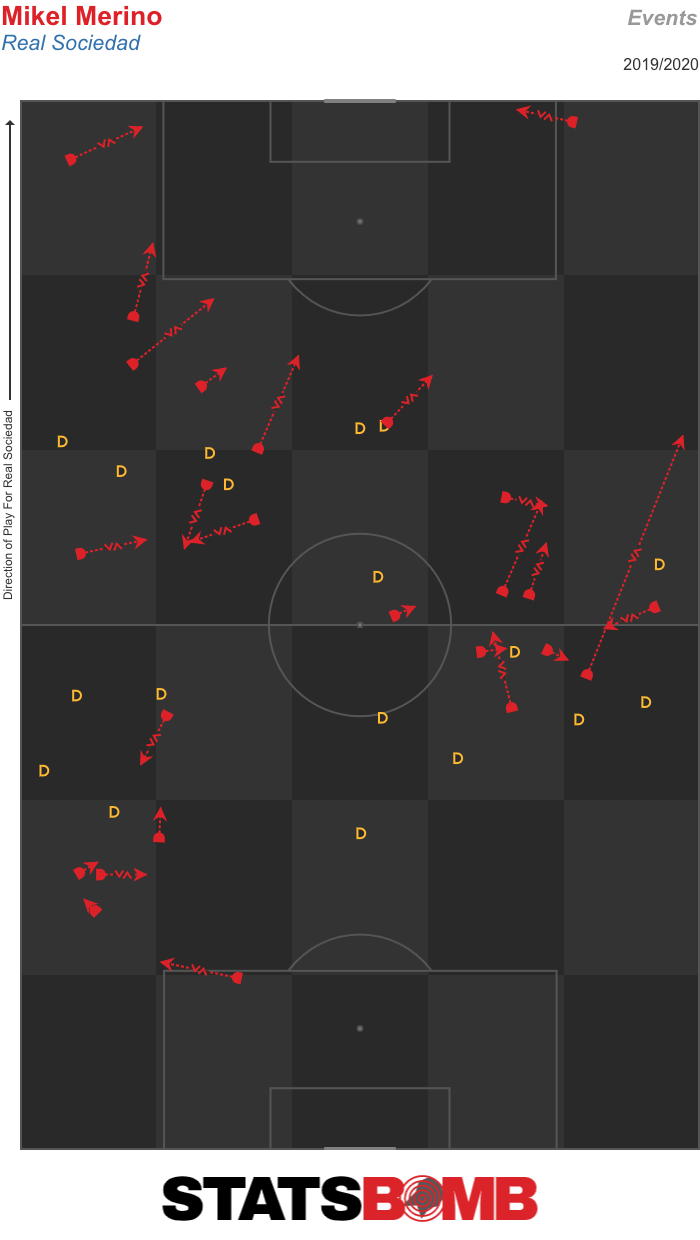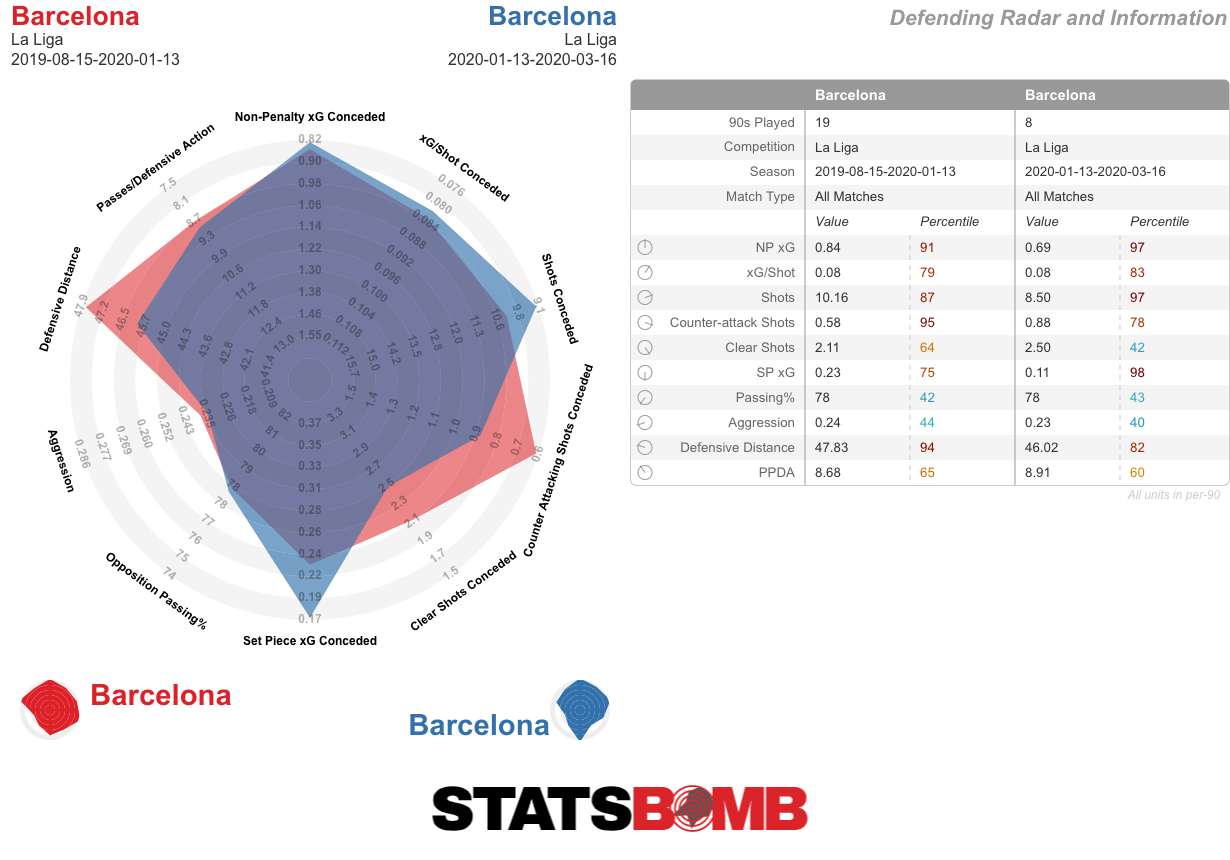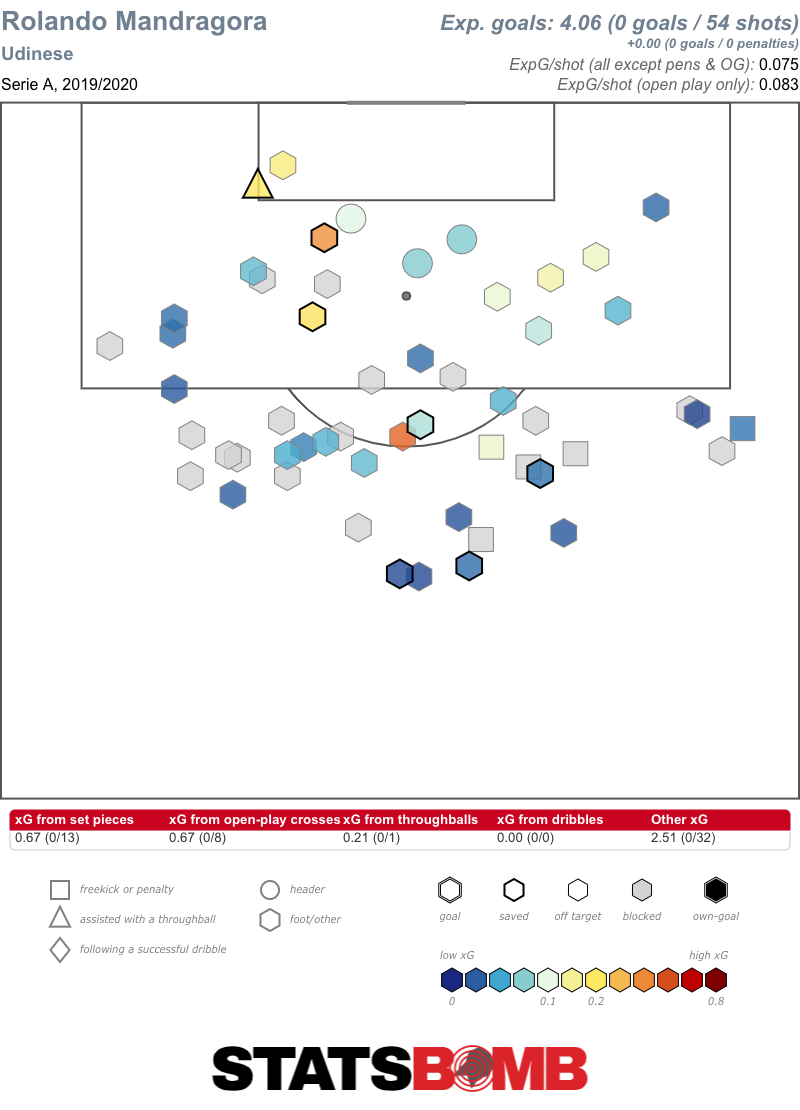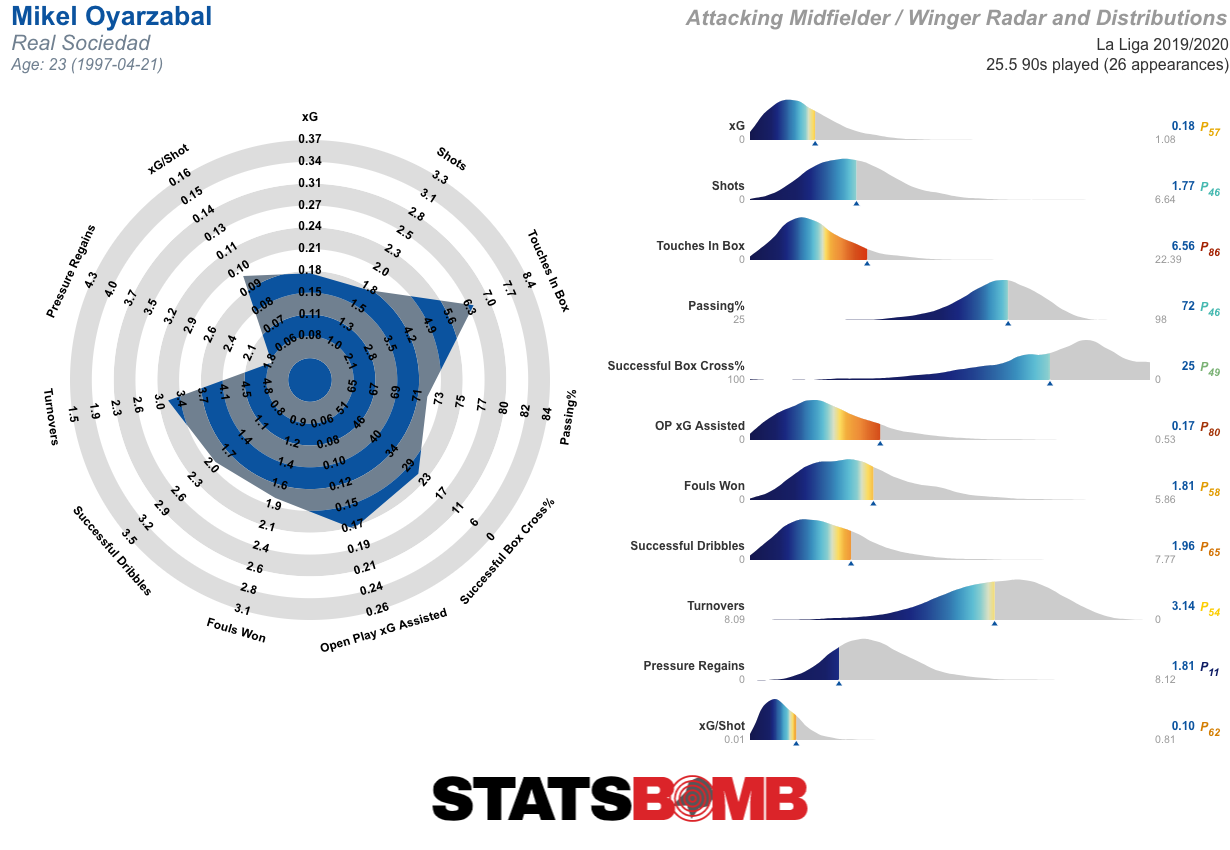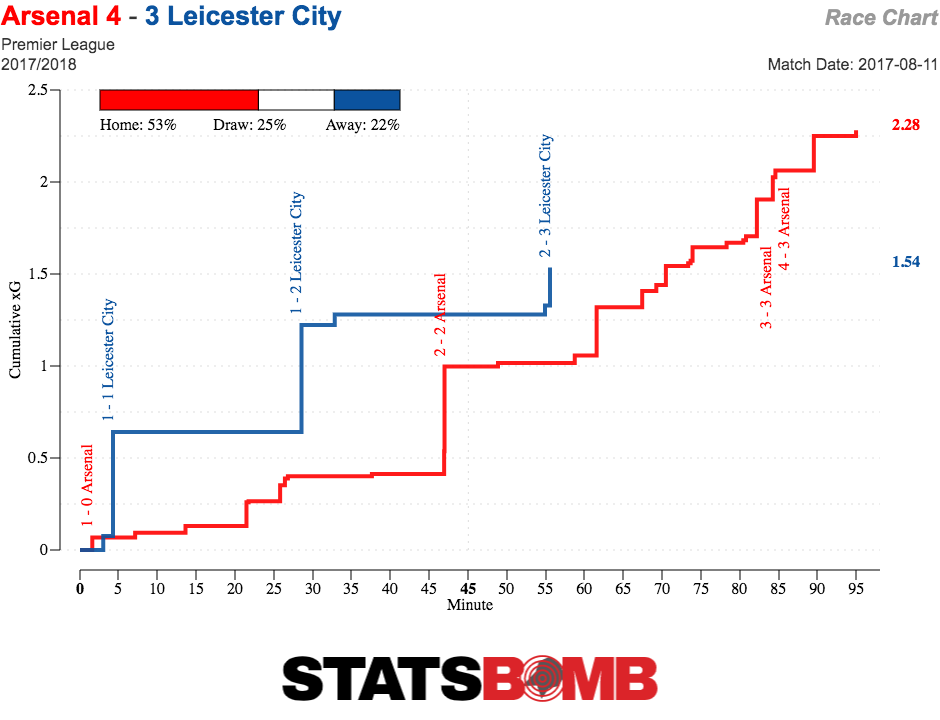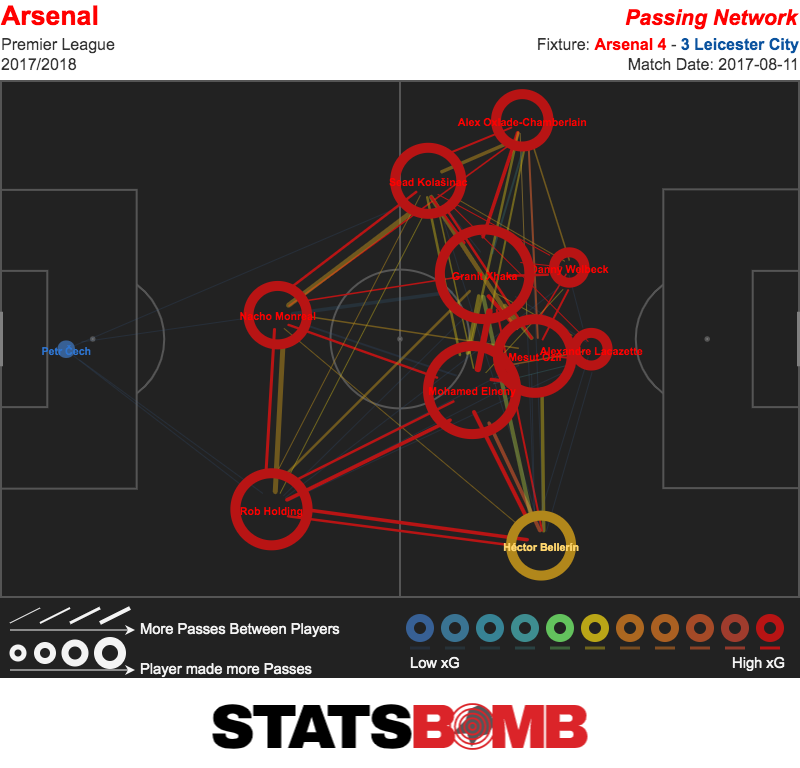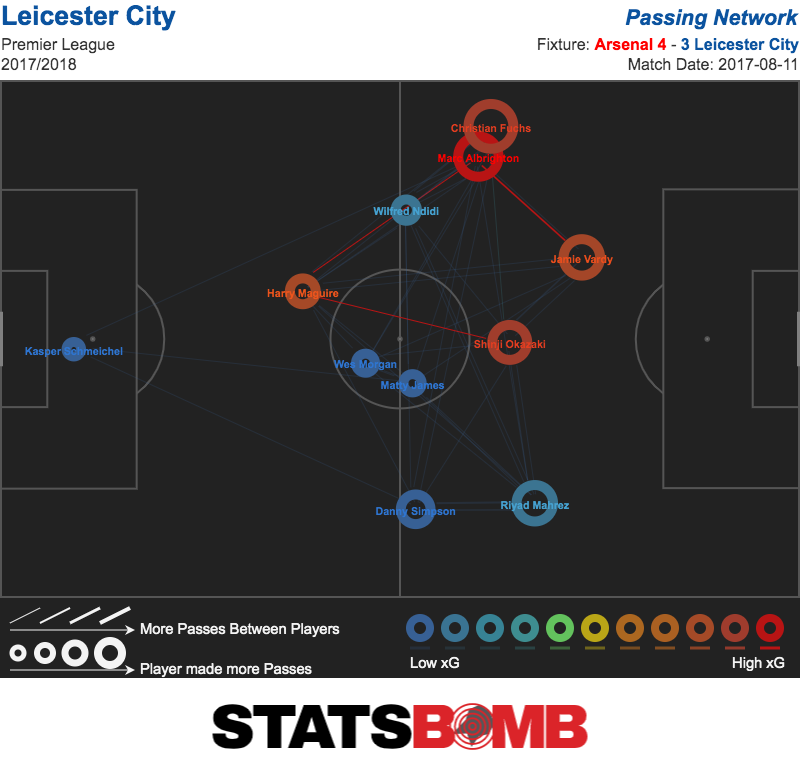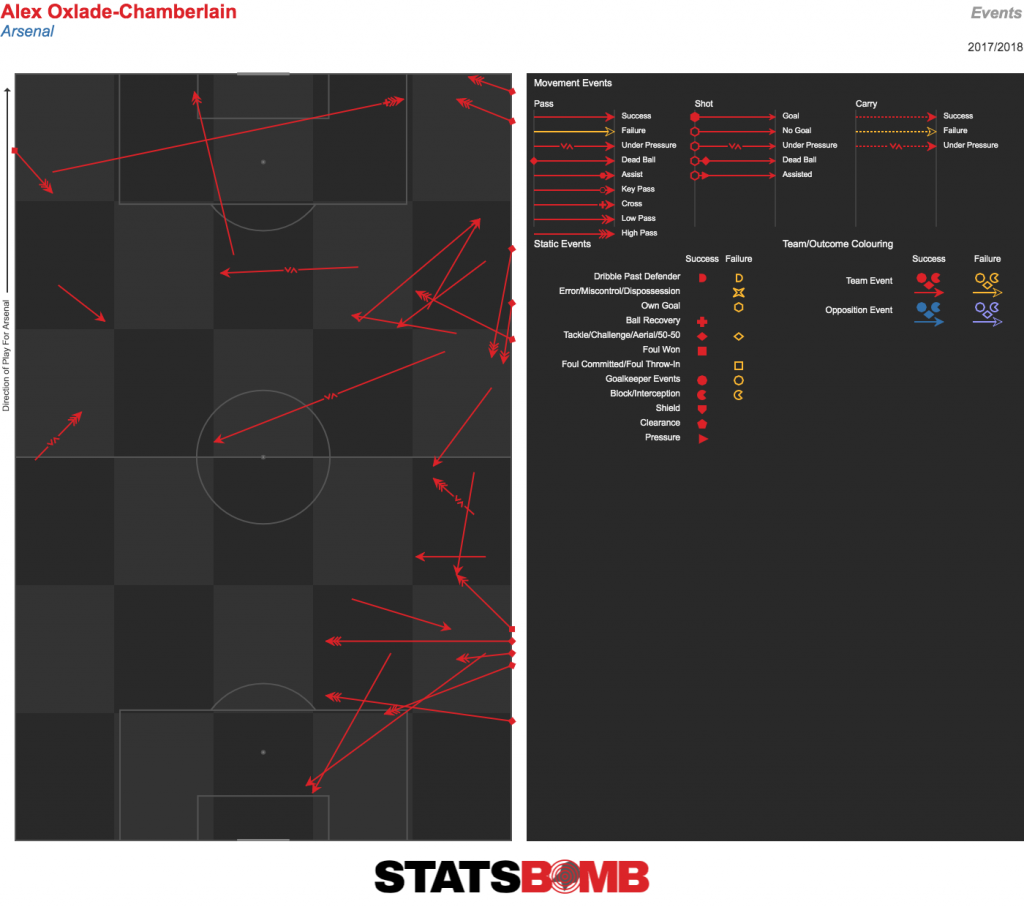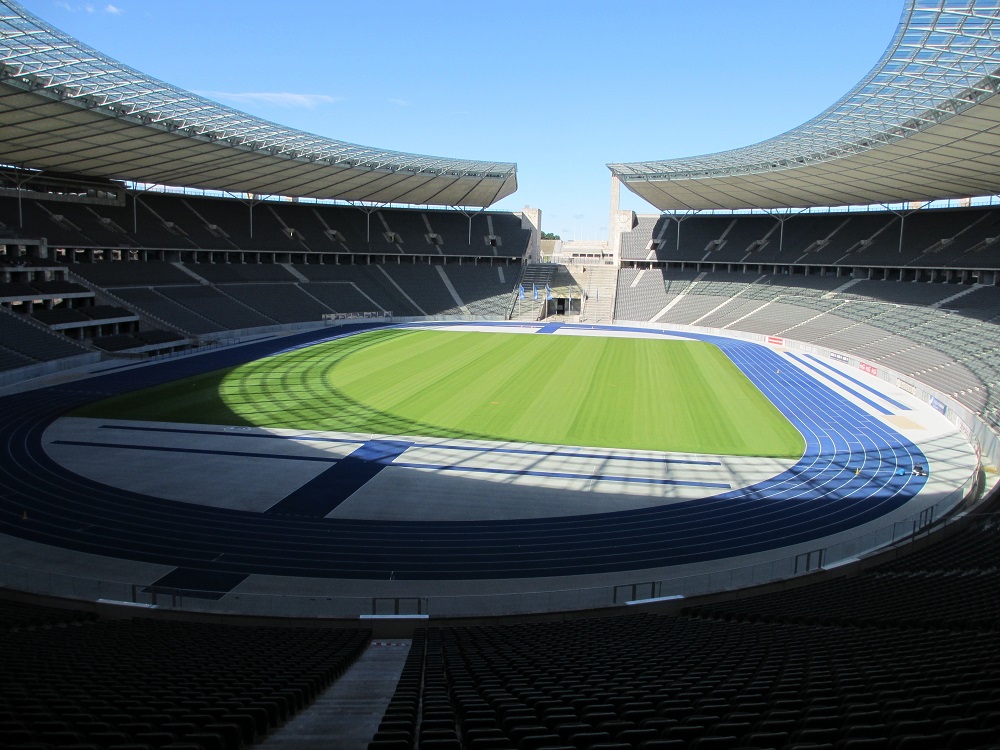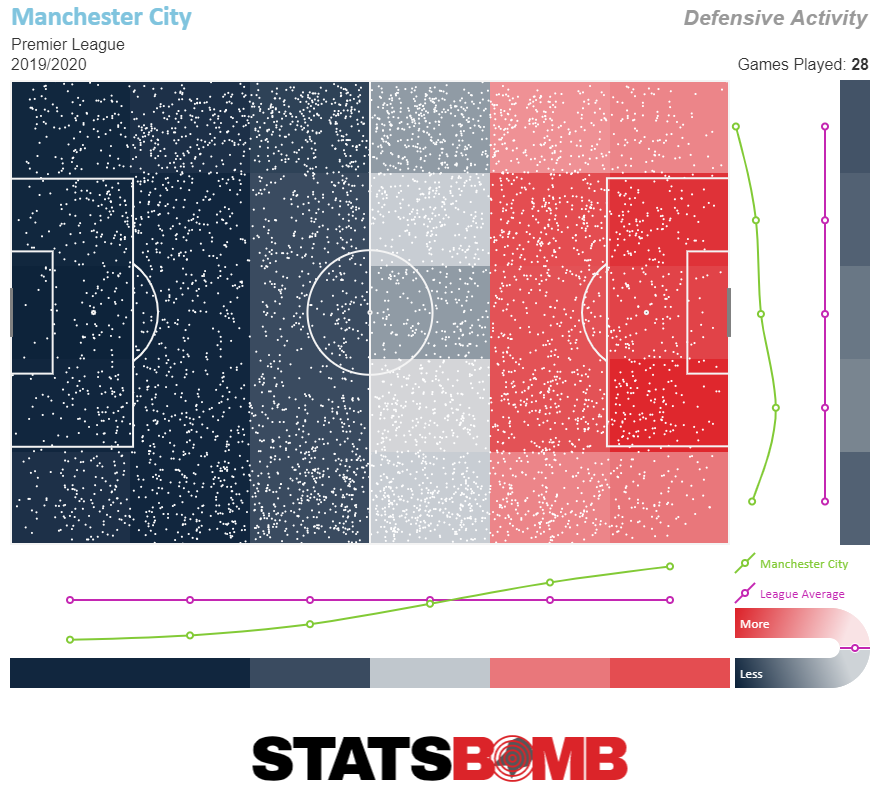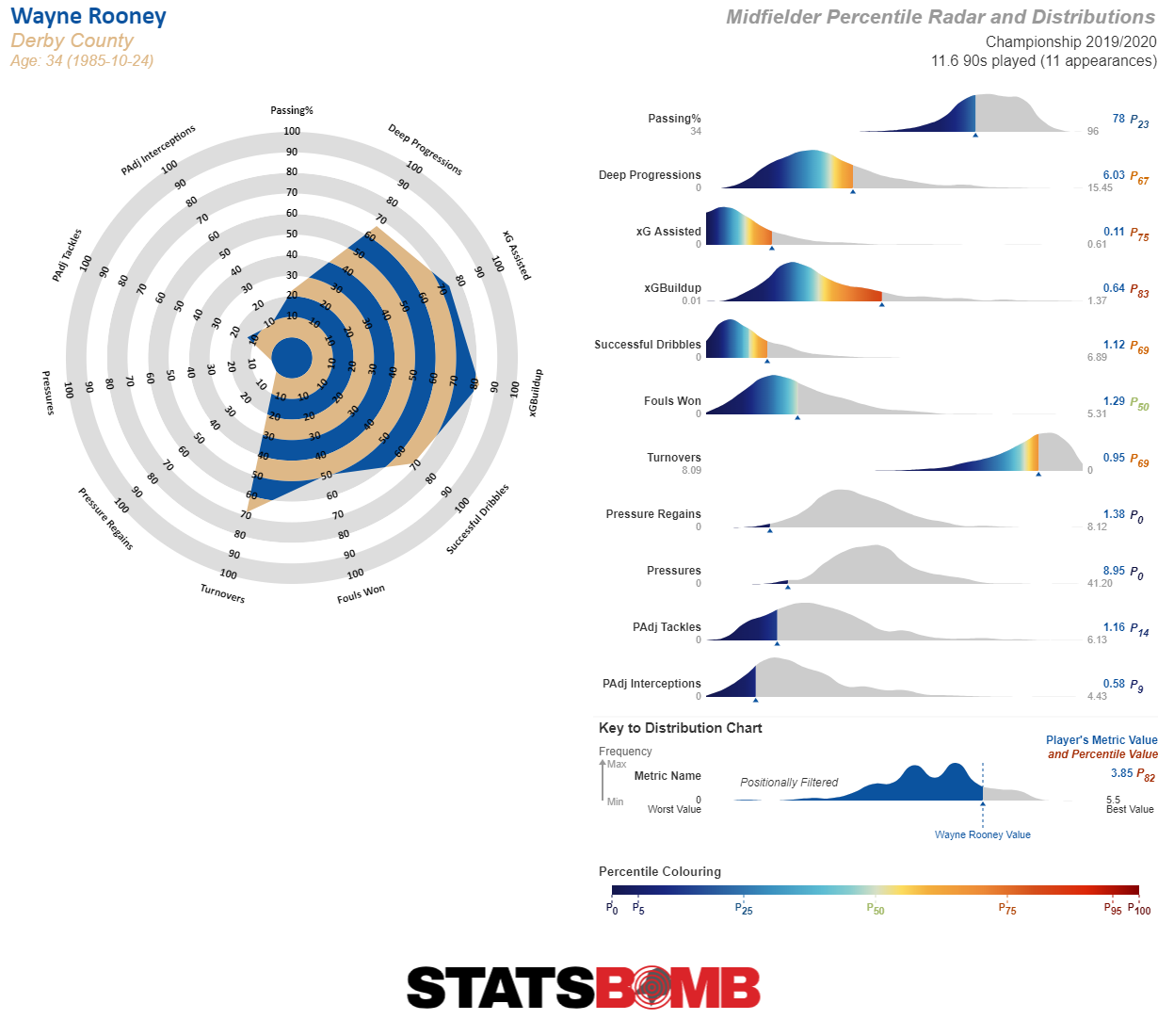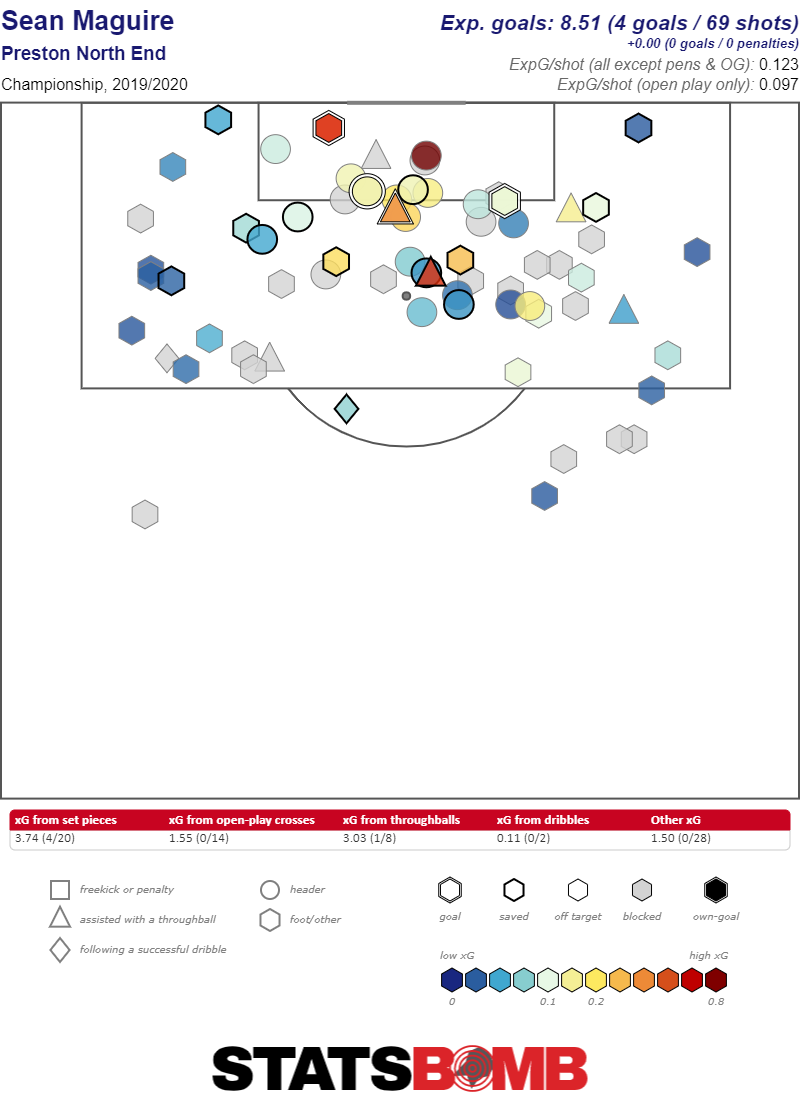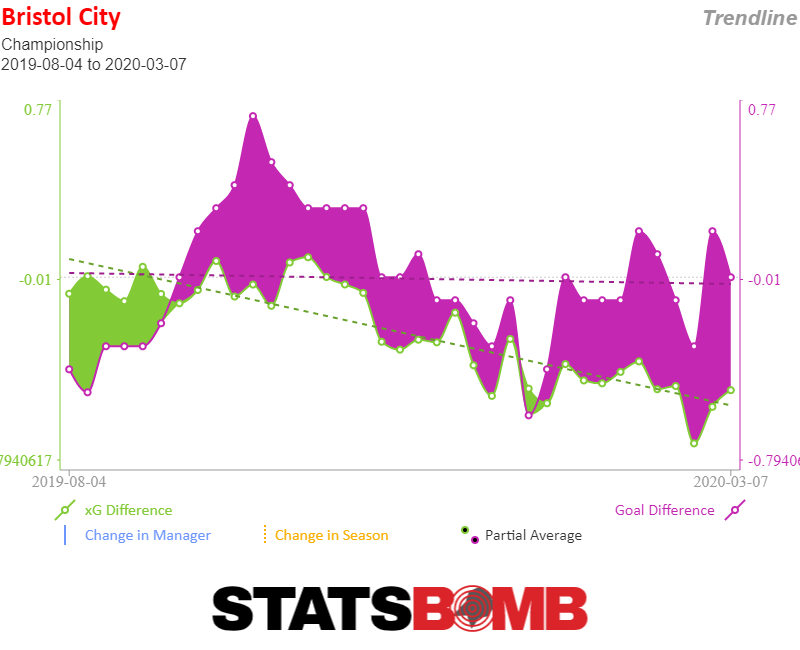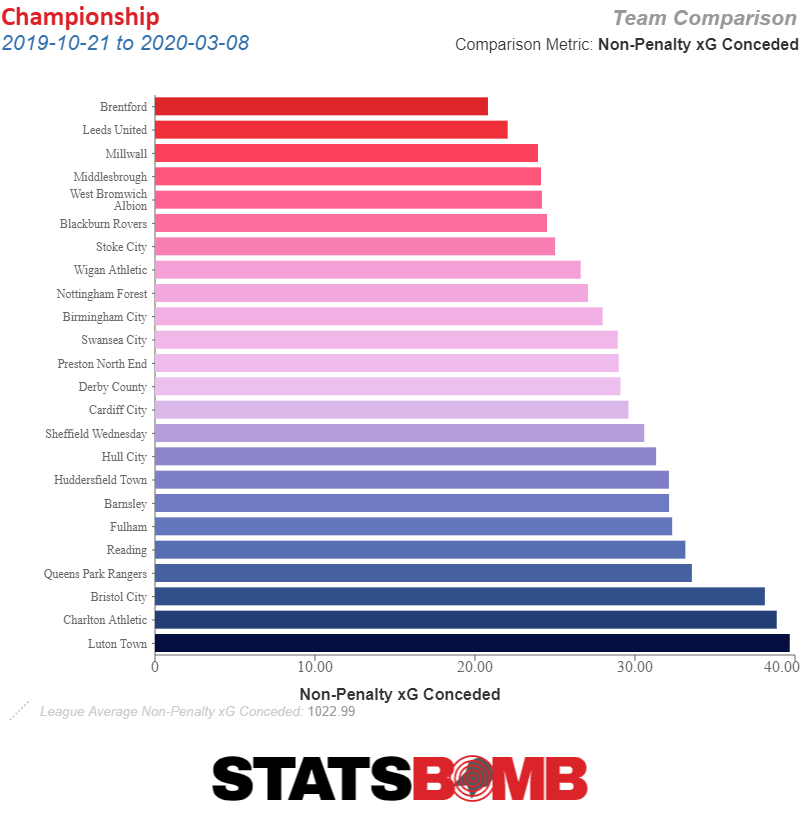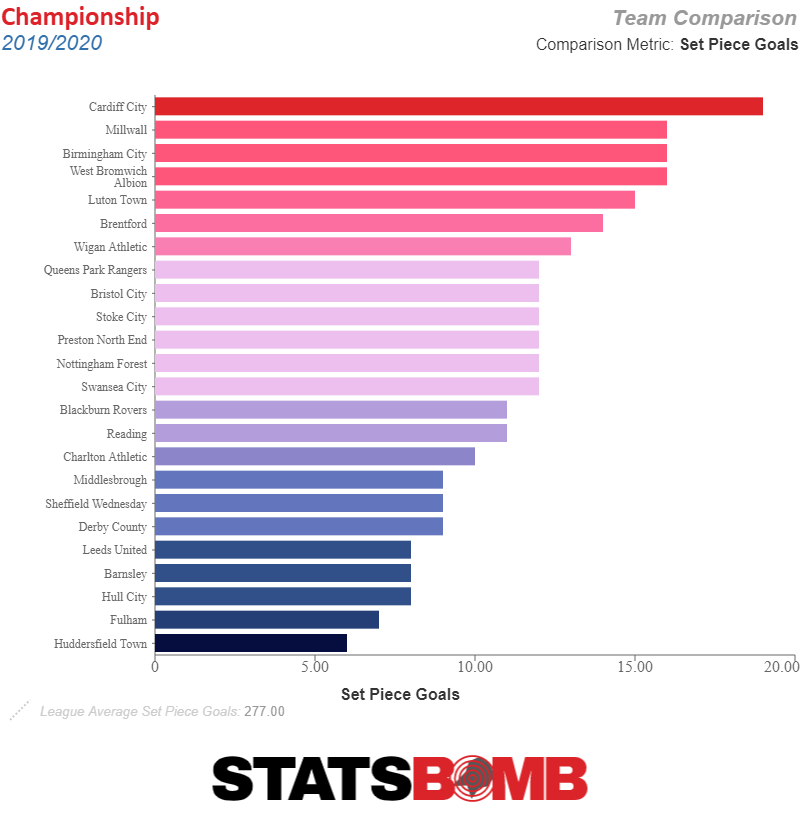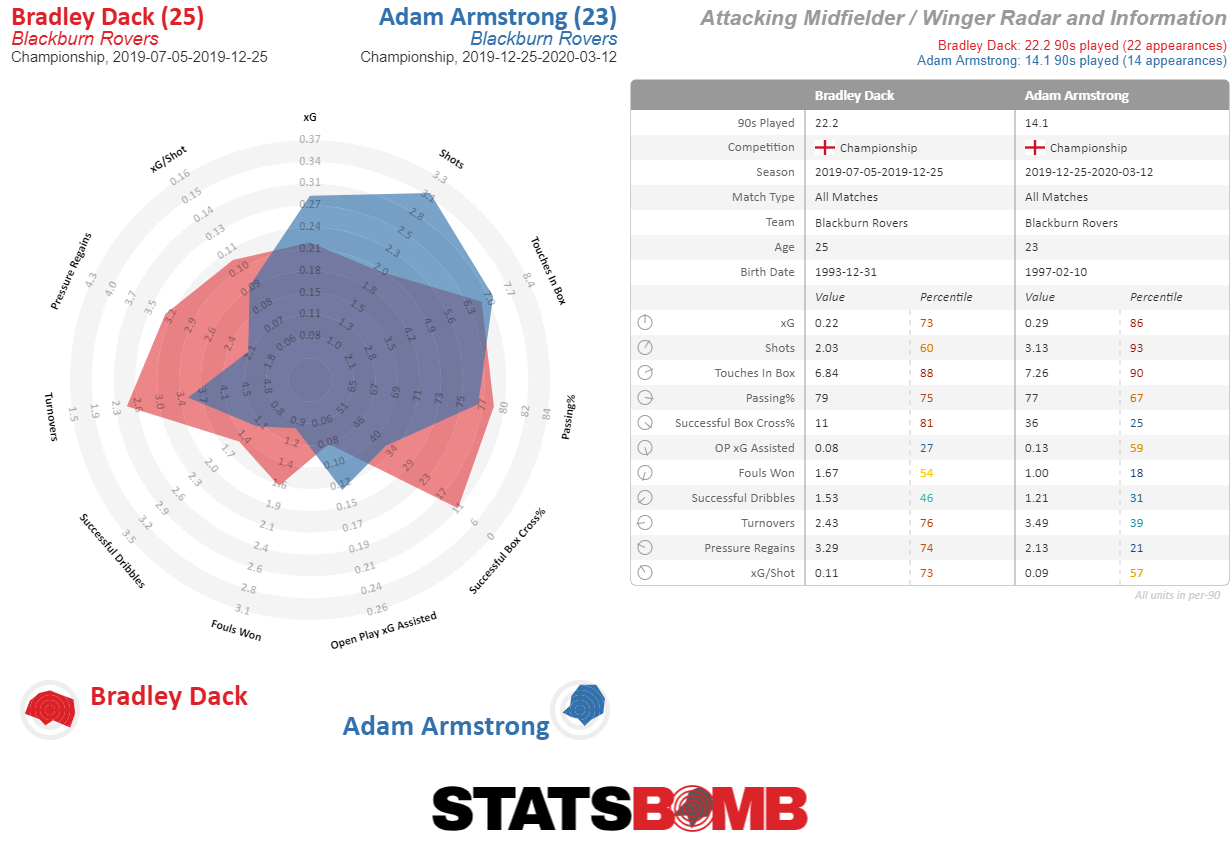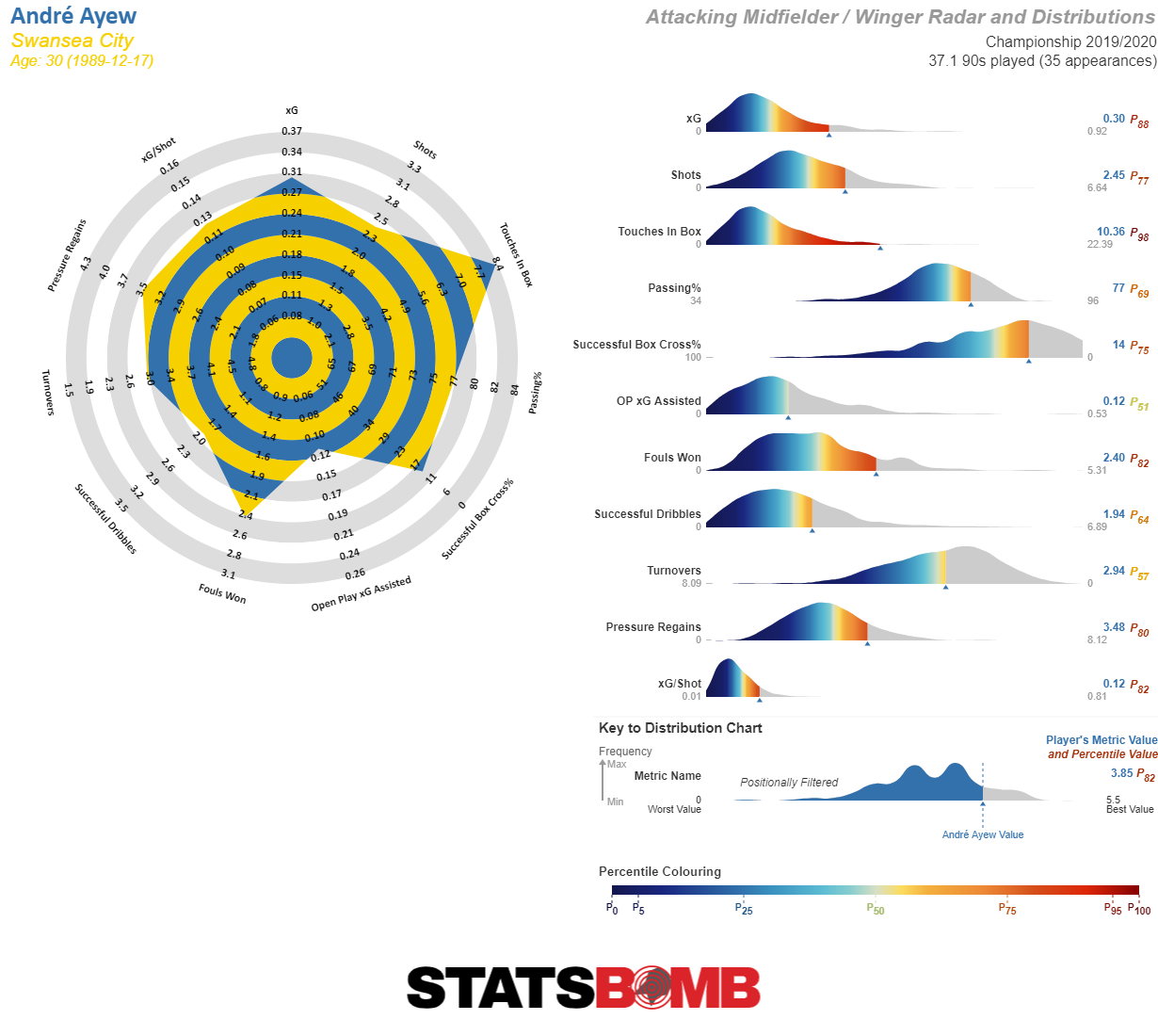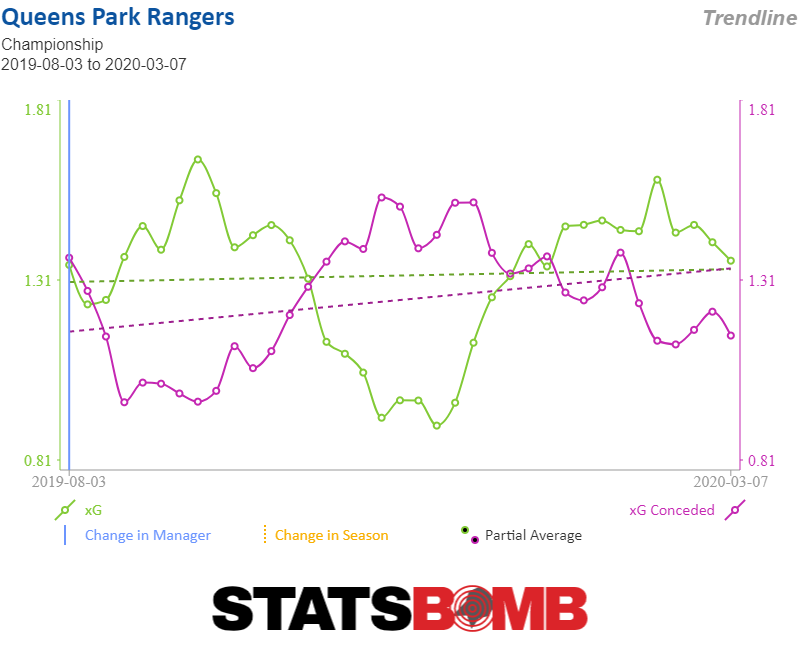The next in our continuing series where Kirsten asks me all (or at least one or two of) the questions you could ever want answered about using stats. This time we're talking about analyzing teams.
KS: So, even after all this education, I’m not quite clear on which stats apply to individuals, and which to teams. Is expected goals the number one valuation used for both players and teams?
MG: There are a bunch of stats that might be applied to players and teams. Pretty much everything you can count a player doing you can then total up and look at as a team number. So numbers, of course, are more useful than others. And for starting a conversation about team analysis, xG is definitely the way to go. As a metric xG is actually probably more useful at the team level than the player level.
KS: In order for me not to panic about not knowing this teams v individuals numbers, Mike sent me a piece entitled (in hindsight, ironically), “Who's gonna fix Wolves?” It’s actually a great place to start thinking about team numbers, given that when the FA hit the pause button on the season, Wolves were in sixth—but when the article was written, they were second from bottom and had yet to record a win. Mike asks if it’s time for Wolves to panic, but unequivocally states that it’s not. Turns out he was right, so it’s appropriate to ask what numbers he used to predict the future . . . and possibly to ask what other factors influenced what he saw in the numbers. Obviously the first number he looks at is xG, but for a defensive team like Wolves, it might be more appropriate to ask about what they’ve conceded. What’s the stat for that, Mike?
MG: The stat for that is xG conceded, it’s just like xG except on the other side of the ball. Look at all the shots a team has conceded, total up the expected amount of goals those shots might lead to, and then look at the actual amount of goals they’ve given up. The great thing about xG as a metric at the team level is that it operates just like goals does. You look at a team’s xG and the xG they’ve conceded and then the difference between the two, so just like you’d look at a team’s goal difference you can also look at their xG difference. And the basic rule is that we should all expect teams to have their goals and xG converse to the same values. Or, to say it slightly more nerdily, xG and xG conceded predict future goals scored and conceded better than current goals scored and goals conceded does. In Wolves' case the side had conceded a bunch more goals, 11, than the xG of the shots they’d conceded, 6.49, predicted, so it was easy to predict that their defense would improve going forward.
KS: And you were right! However, when you go on to explain the bad news, you state that Wolves’ xG isn’t nearly what it was last season—enough to land them just outside the top of the table. Instead, they’re in the European places. Does this indicate that looking at just xG and xG conceded isn’t enough?
MG: Well, I think there are three components to that answer. First is that position in the table is always going to be contingent on not only how well one team plays, but how well everybody else plays. So, part of what was going on in this once and maybe future season is Arsenal struggling, Spurs collapsing, and just in general a season where the league’s big six are being underwhelming. So, even if xG is fully capturing the contours of Wolves performance, the side’s performance in relation to everybody else can certainly change.
Second, we need to separate out two different ideas surrounding xG. There’s the idea of how a team’s actual goals stack up against their expected goals. In that arena we can say with confidence what we expect to happen (the goals they score and concede will eventually come in line with xG), but the story of how that is likely to happen is where science meets art. The question of what exactly is causing the divergence is an interesting one and highly relevant for players and managers and fans, even if we can say that whatever it is is likely temporary.
And finally, xG levels can themselves change. While xG is a pretty good proxy for how good a team is, teams get better and worse all the time. So we might observe a team’s xG improve on either side of the ball from season to season, or even within a season, and then we’d want to look for reasons why that was happening. Usually xG is pretty predictive of itself, which is to say that usually teams don’t improve a ton or get dramatically worse over the course of a season, but there are always exceptions.
So, to sum it up. Yeah.looking at xG itself isn’t enough. You need to look at a team’s metrics in relation to the rest of the league, look at how a team’s actual results are in relation to that metric and why they might differ, and then look at the movement of the metric itself and what might be causing it to change.
KS: Now, despite being barricaded inside my apartment, I don’t have time to go back and look for an article in which a team’s expected xG differed wildly from the actual number of goals scored. Here, Wolves were pretty much on track: They’d scored 6 with an xG of 5.61. However, they had conceded 11 goals from 6.49 xG conceded—and this isn’t viewed as a problem. So given that defense is simply attack in reverse (shocking!) I can look at those defense numbers and wonder, what on earth causes this difference between what is predicted and what happens in reality?
MG: Right, early this season the biggest thing that was wrong with Wolves is that the team’s goals conceded was much higher than their xG conceded. And while we’d expect that the numbers would come back in line, fixing the problem, that doesn’t tell us much about how that’s going to happen. The biggest element involved in these kinds of divergence is generally just variance in finishing. There’s really not much you can do if your opponents keep launching into the top corner against you, except rely on the numbers to reassure you it won’t keep happening.
But, there are other things that can contribute that are at least worth looking into. We can isolate keeper performance, for example. StatsBomb has a separate model, a post-shot xG model, that looks at the performance of keepers given the shots they’ve faced (this is different from normal xG models because it takes factors like the trajectory of the ball into account, which you’ll just have to trust me is the best way to go about things because working through those differences is a whole article unto itself). Using those tools we can determine if some of the divergence is down to keeper performance. Or we can separate out set pieces from open play. If the problem is that a team is conceding a lot more on set pieces than expected, it would be worthwhile to examine if there is in fact something going wrong in that phase of the game.
All of which is to say that the fact that a team is diverging from their xG or xG conceded is the start of the story, the fact that they’ll eventually come back to expectations is the end, but there are chapters and chapters to investigate in the middle about why that divergence occurs and what the likely path back is.
KS: Ok, one last question because it’s been bugging me: why are penalty goals removed from the equation?
MG: Penalties are just not particularly predictive of anything. Just because one team got a bunch of penalties doesn’t mean they’re any more likely to get them in the future. So, including them doesn’t help us get a true picture of how good or bad a team is. It’s mostly just a function of the kind of variance that likely won’t continue. And, since the entire point of xG is to strip out the noise and look at what’s likely to continue, away go the penalties.
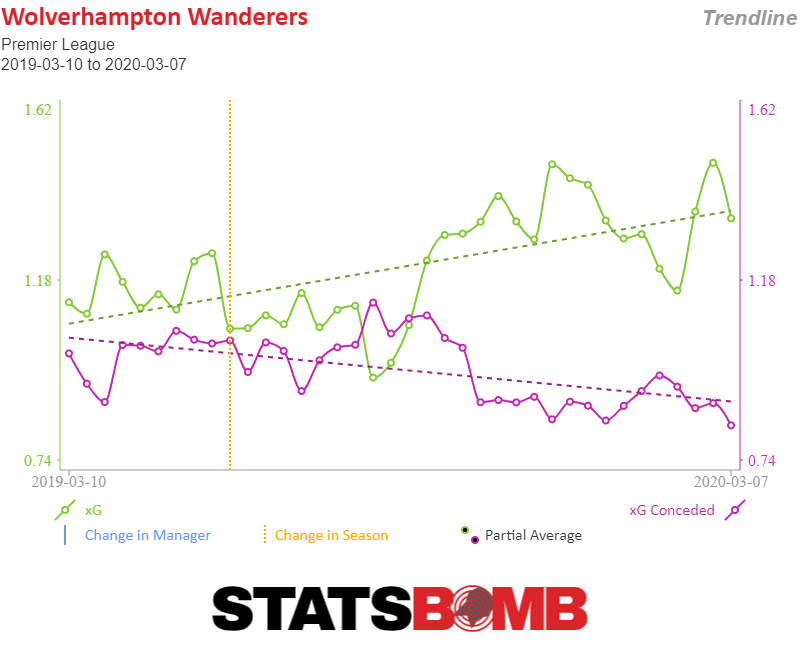
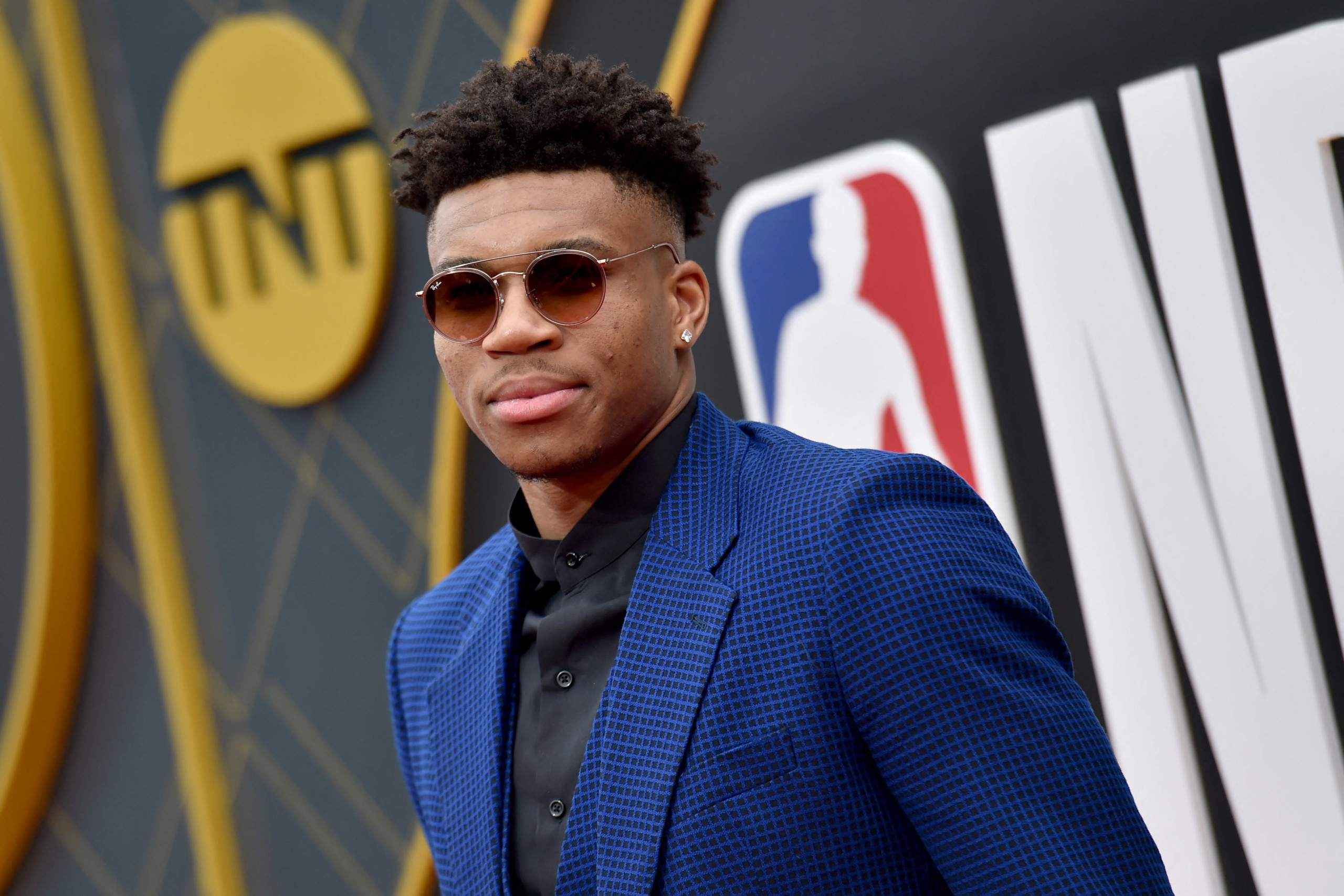
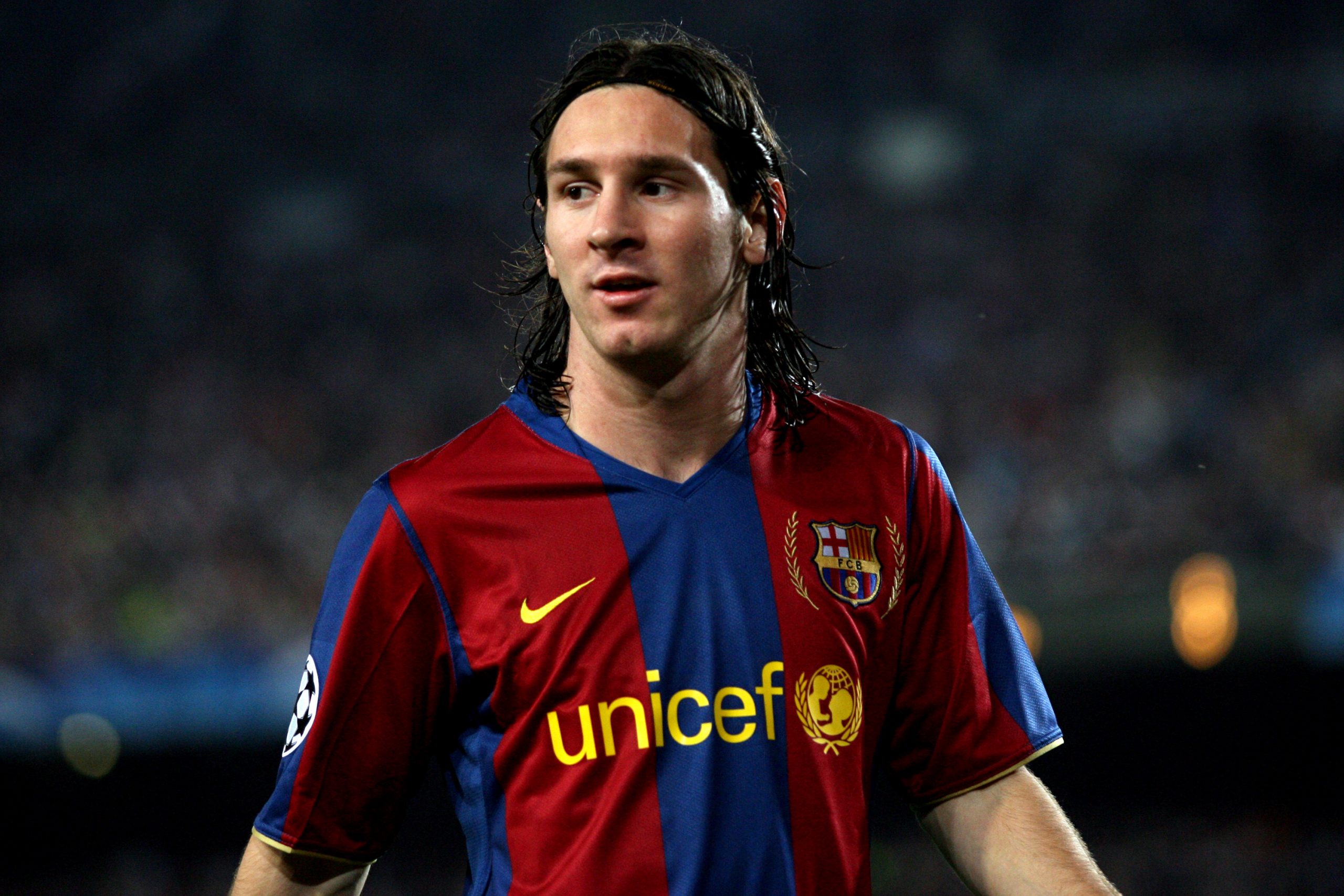
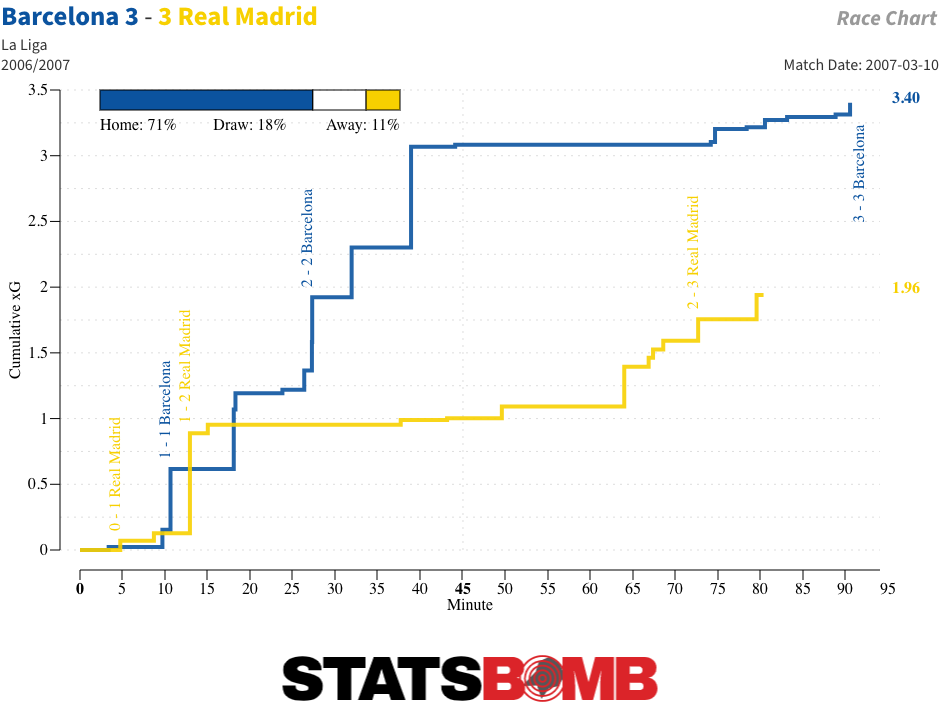 AD: It’s true. It was a very open match . . . a lot of back and forth, in part because neither of the teams pressed well. Barcelona had more players high up the pitch, but Madrid were able to find routes forward down the flanks in the midfield zone, just behind Barça’s wingers. Madrid also tried to get Ruud van Nistelrooy in behind a lot. Mainly off the back of Thuram. It’s also worth noting that Barça were left with 10 men after the dismissal of Oleguer. Their search for an equaliser opened things up even more in the second half.
AD: It’s true. It was a very open match . . . a lot of back and forth, in part because neither of the teams pressed well. Barcelona had more players high up the pitch, but Madrid were able to find routes forward down the flanks in the midfield zone, just behind Barça’s wingers. Madrid also tried to get Ruud van Nistelrooy in behind a lot. Mainly off the back of Thuram. It’s also worth noting that Barça were left with 10 men after the dismissal of Oleguer. Their search for an equaliser opened things up even more in the second half. 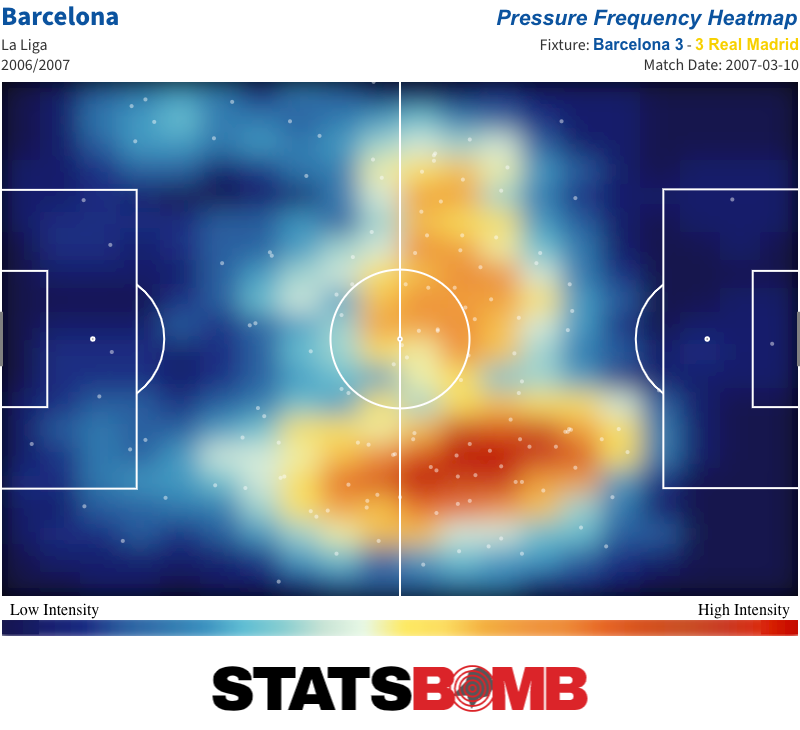
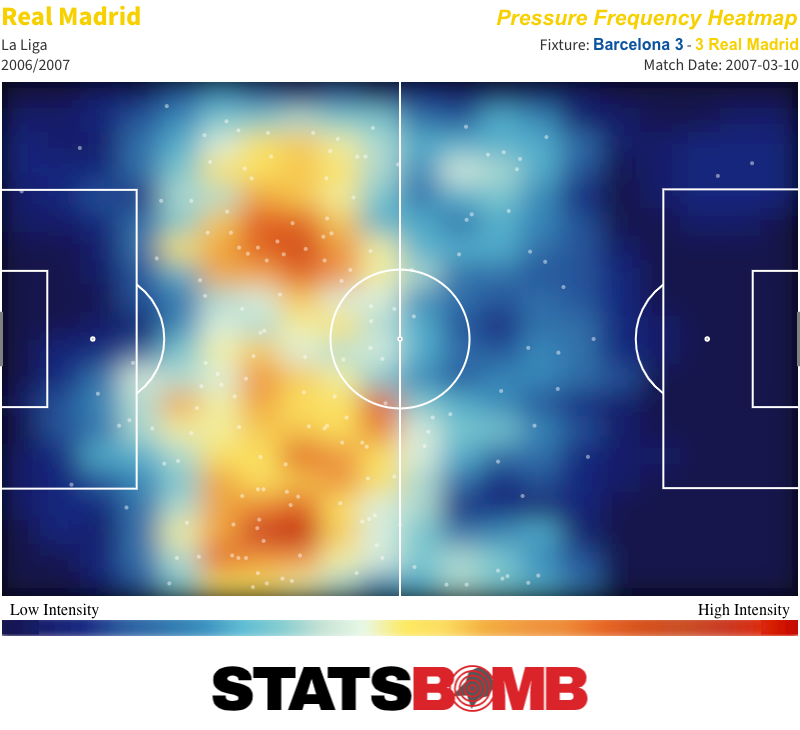 As you mentioned before, at this stage of his career Messi played very wide on the right, and in this match Barcelona's attack was quite asymmetrical. There were a lot of players toward the left and only really Messi holding width on the right. It was surprising to see the amount of space that Messi had to receive in behind Madrid’s left-back Miguel Torres, both on the first goal and on other occasions during the first half. Do you think it was an approach designed to exploit a certain weakness in the Madrid defence or was it just the result of the natural game of Deco, Iniesta, Ronaldinho and Samuel Eto’o, all of whom preferred to receive towards the left?
As you mentioned before, at this stage of his career Messi played very wide on the right, and in this match Barcelona's attack was quite asymmetrical. There were a lot of players toward the left and only really Messi holding width on the right. It was surprising to see the amount of space that Messi had to receive in behind Madrid’s left-back Miguel Torres, both on the first goal and on other occasions during the first half. Do you think it was an approach designed to exploit a certain weakness in the Madrid defence or was it just the result of the natural game of Deco, Iniesta, Ronaldinho and Samuel Eto’o, all of whom preferred to receive towards the left? 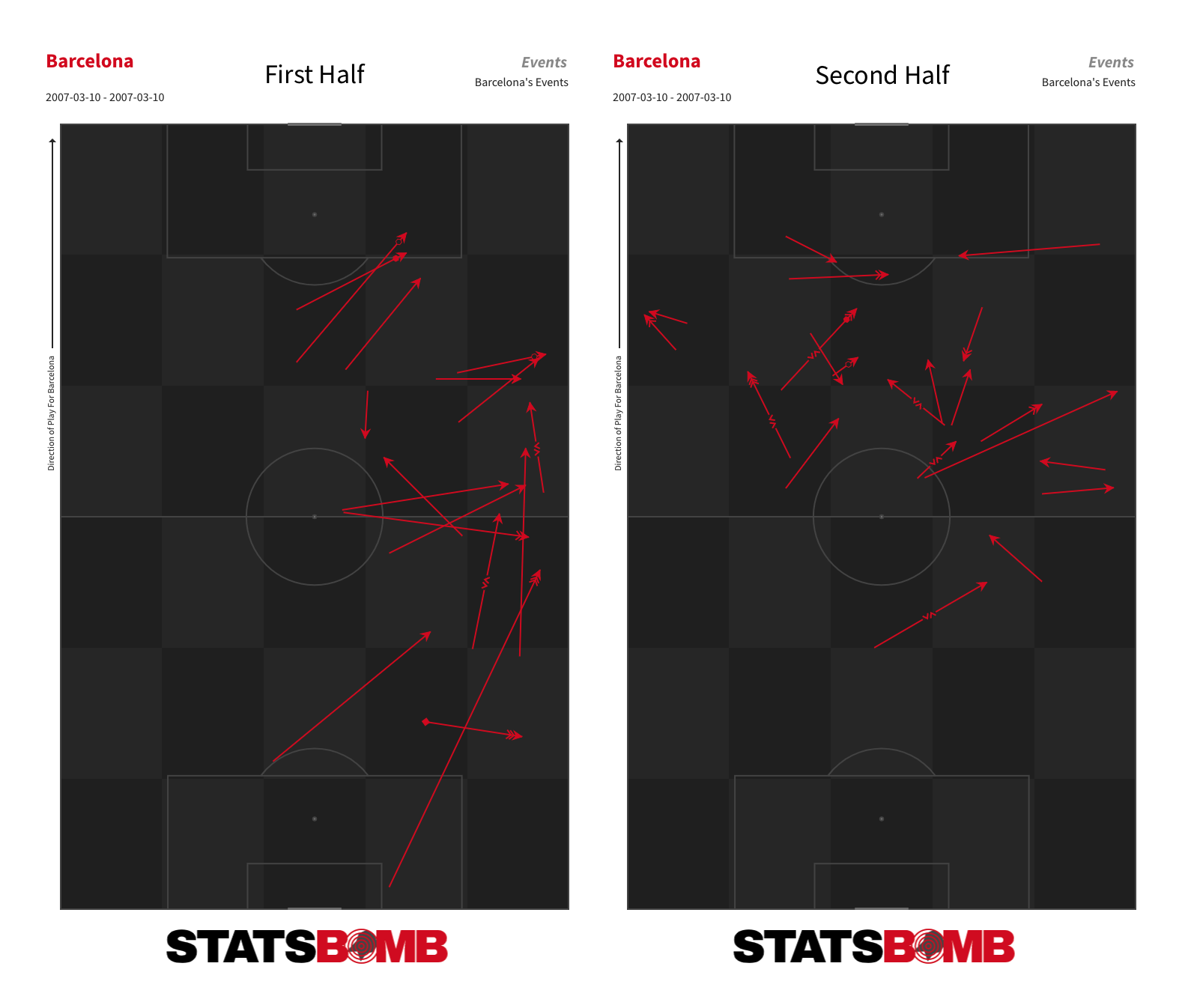 AD: He and Ronaldinho carried the team on their backs. It was an exchange between them that led to the decisive 3–3 goal.
AD: He and Ronaldinho carried the team on their backs. It was an exchange between them that led to the decisive 3–3 goal. 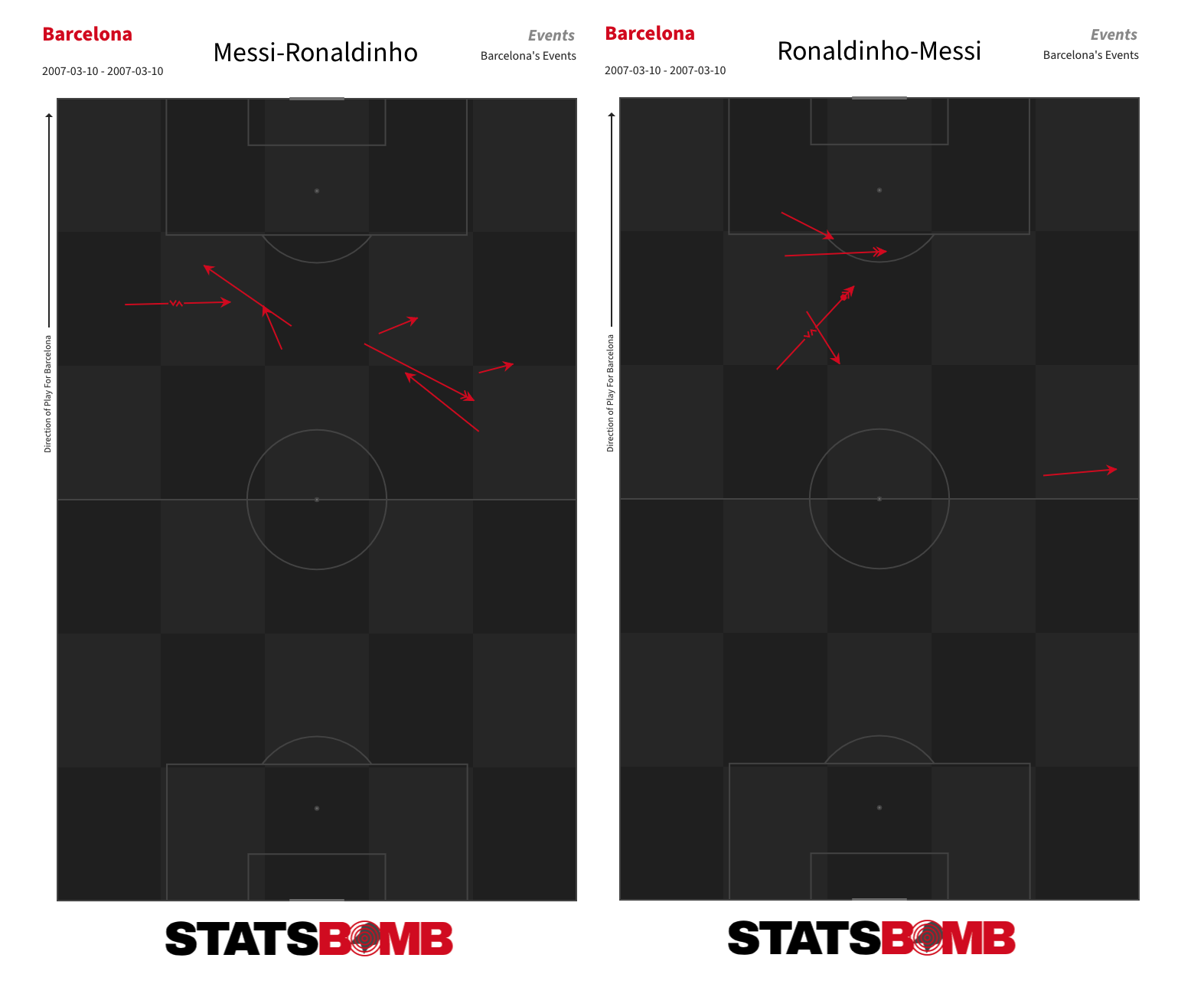 And as you said, they combined for the equalising goal just a minute from full time.
And as you said, they combined for the equalising goal just a minute from full time. 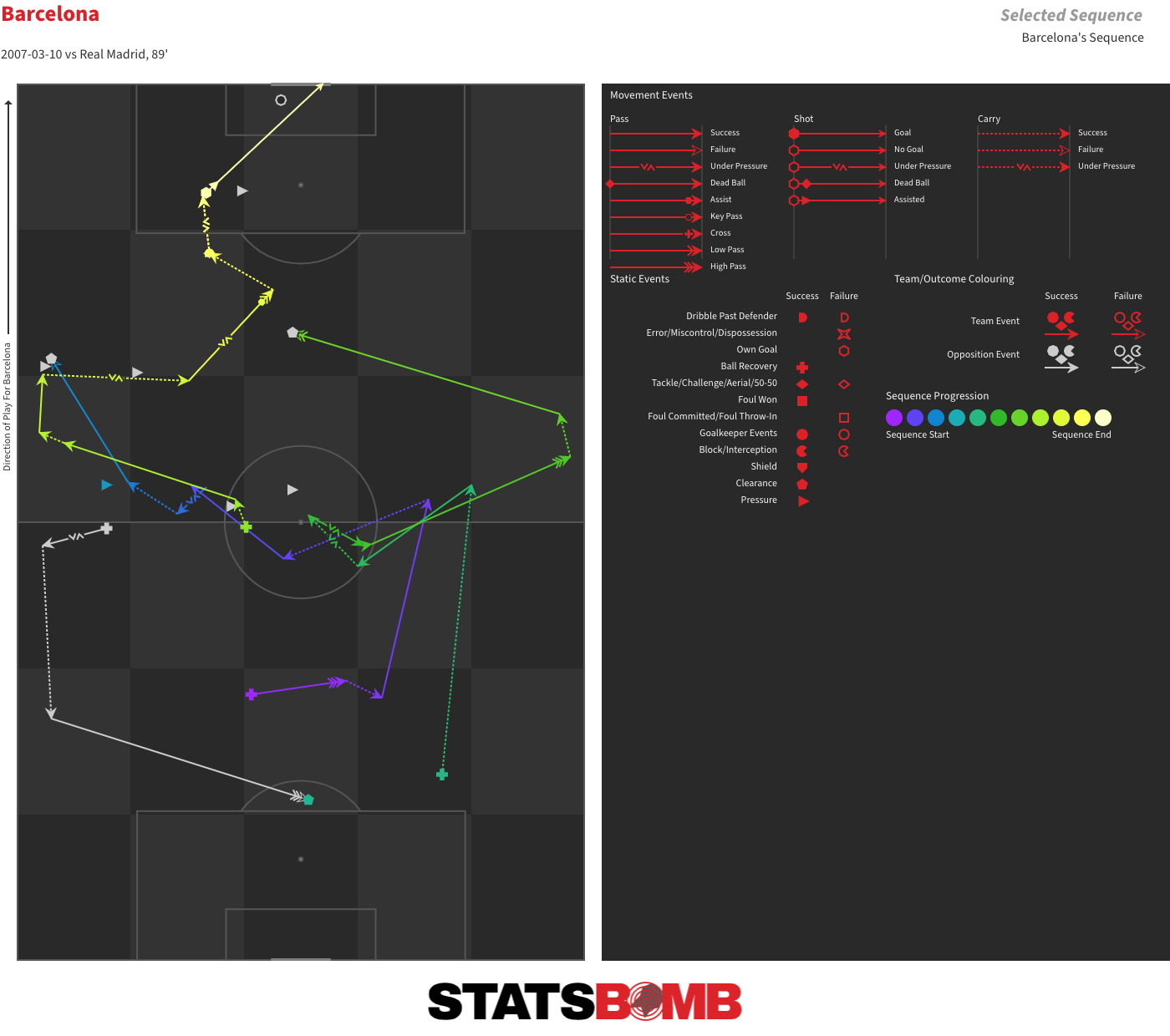 I’d like to ask you a couple of things related to that goal. The first is about Ronaldinho and his ability to play with his back to goal. On the goal, he received the ball like that, held off the pressuring defender and slipped a nice pass into Messi. For me, that's one of his underrated attributes, something that allowed him to interchange with Eto’o and play in central zones with relative ease. AD: Yes. Ronaldinho was a very complete attacking player. He could pass, shoot, dribble and as you say, he was strong and could protect the ball very well. At least when he was up for it . . . because a lot of it depended on his form. It is also fair to say that playing centrally neutered a number of his attributes. Eto’o also didn’t provide as much from wide.
I’d like to ask you a couple of things related to that goal. The first is about Ronaldinho and his ability to play with his back to goal. On the goal, he received the ball like that, held off the pressuring defender and slipped a nice pass into Messi. For me, that's one of his underrated attributes, something that allowed him to interchange with Eto’o and play in central zones with relative ease. AD: Yes. Ronaldinho was a very complete attacking player. He could pass, shoot, dribble and as you say, he was strong and could protect the ball very well. At least when he was up for it . . . because a lot of it depended on his form. It is also fair to say that playing centrally neutered a number of his attributes. Eto’o also didn’t provide as much from wide. 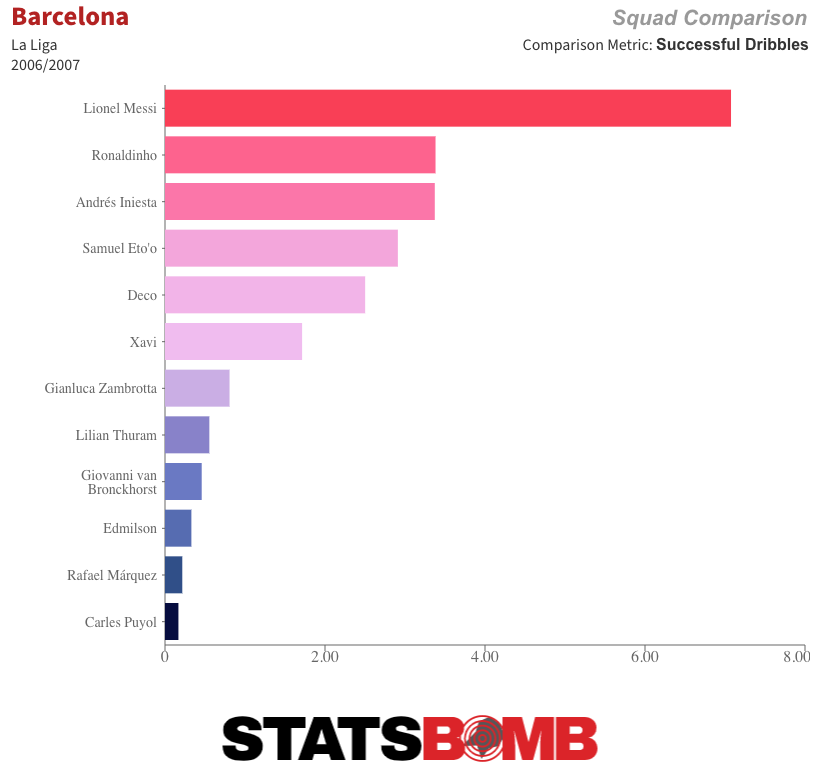 But he always provided production in front of goal as well. In 2005–06, his first full season, he averaged 3.60 shots and 0.52 xG per 90. This match marked the start of an impressive run during the final three months of the 2006–07 season in which he registered 11 of his 14 goals for the year. He started to get into the area more often and take more shots from better positions.
But he always provided production in front of goal as well. In 2005–06, his first full season, he averaged 3.60 shots and 0.52 xG per 90. This match marked the start of an impressive run during the final three months of the 2006–07 season in which he registered 11 of his 14 goals for the year. He started to get into the area more often and take more shots from better positions. 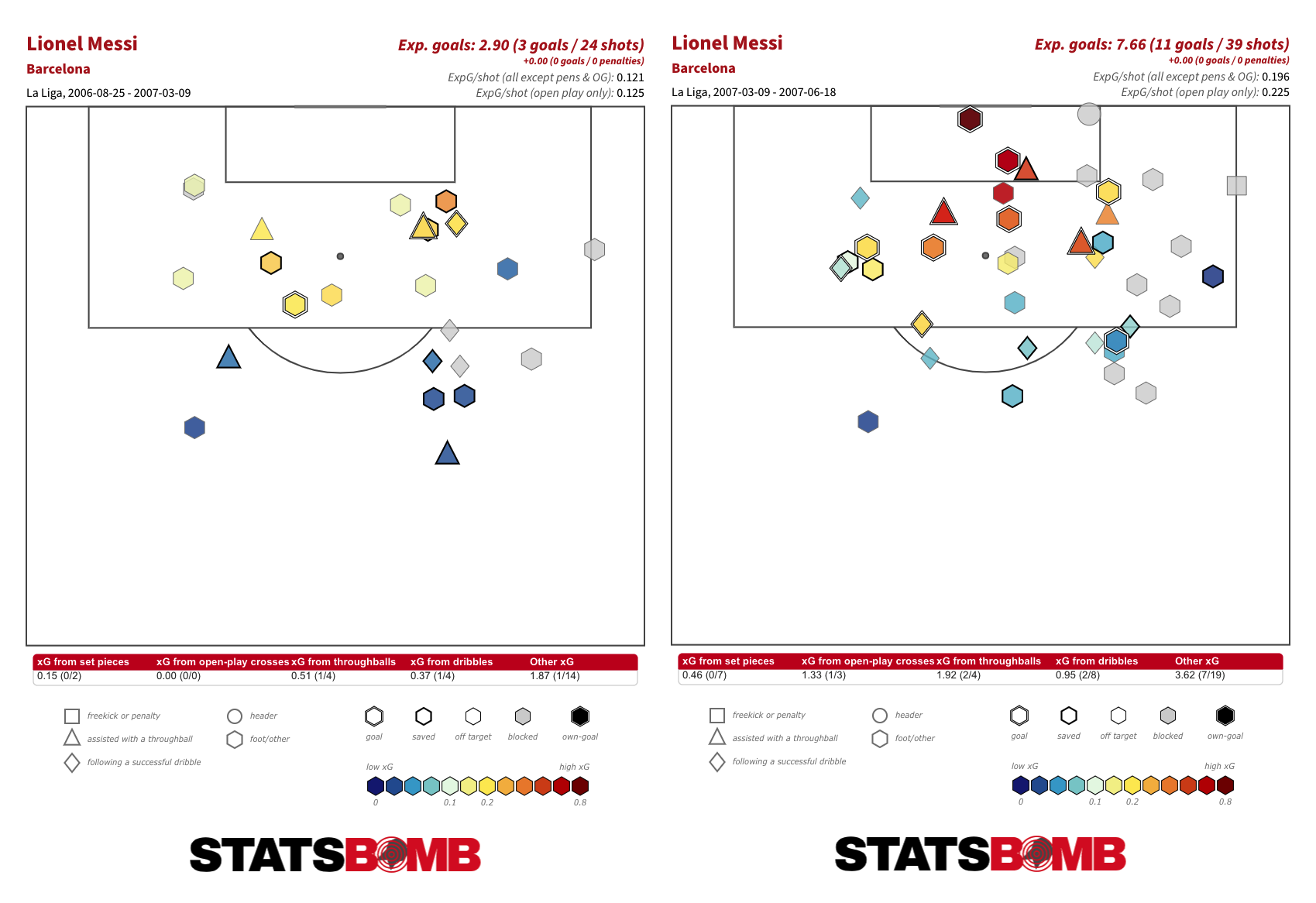 Did that sudden eruption of goals surprise you? AD: He was progressing rapidly. That uptick in shots is somewhat linked to his growing status within the team and an increase in the amount of freedom he was given positionally. It was logical that his output would increase, but it was still a bit surprising. He had already made his goalscoring ability clear in the youth teams but one wouldn’t have imagined him becoming quite as a prolific scorer as he did.
Did that sudden eruption of goals surprise you? AD: He was progressing rapidly. That uptick in shots is somewhat linked to his growing status within the team and an increase in the amount of freedom he was given positionally. It was logical that his output would increase, but it was still a bit surprising. He had already made his goalscoring ability clear in the youth teams but one wouldn’t have imagined him becoming quite as a prolific scorer as he did. 